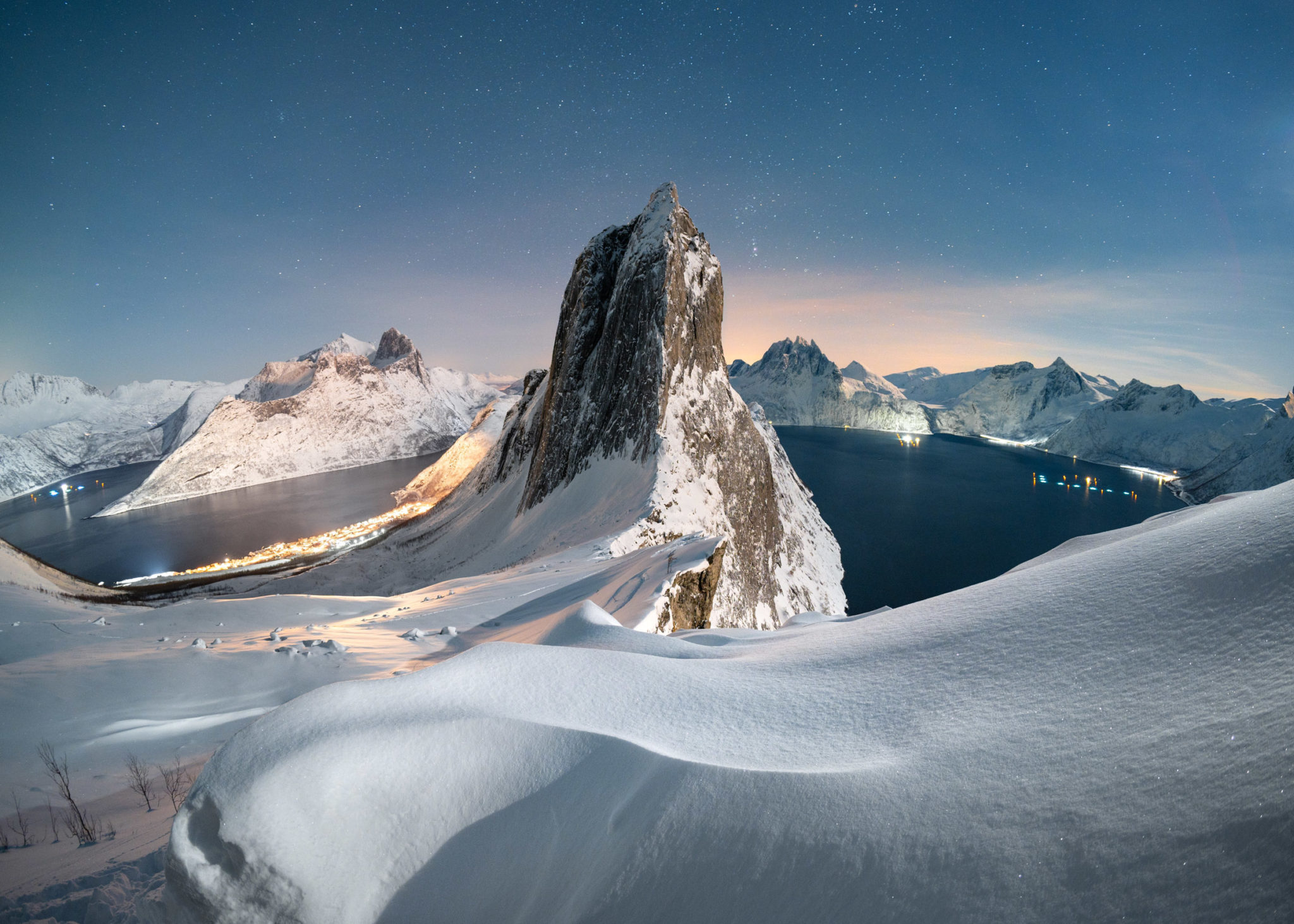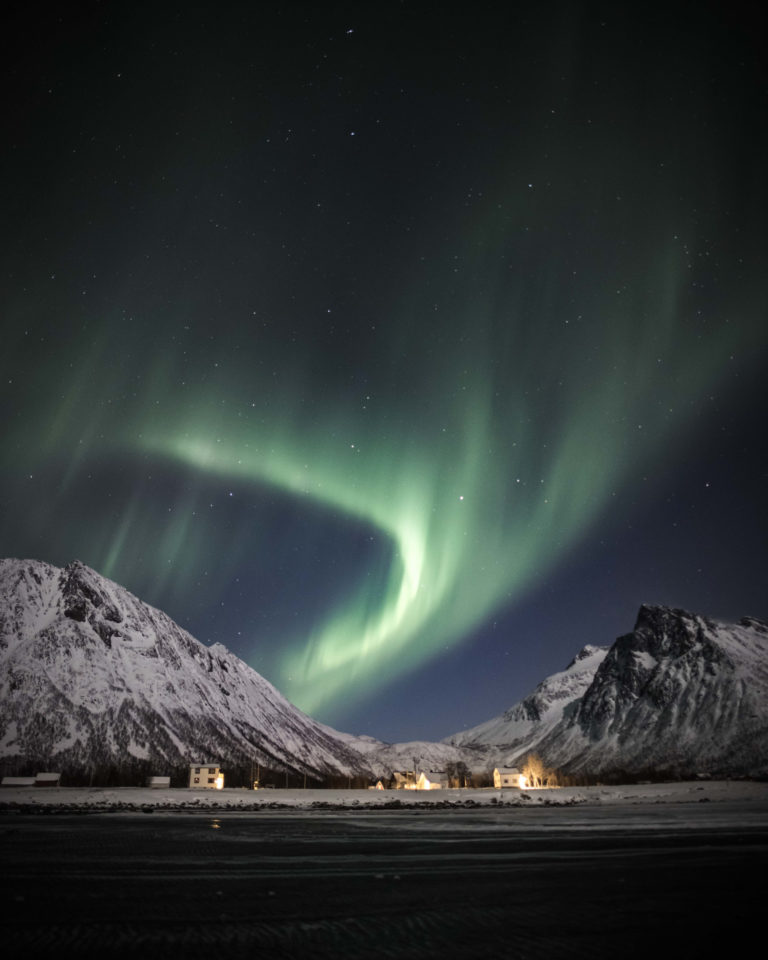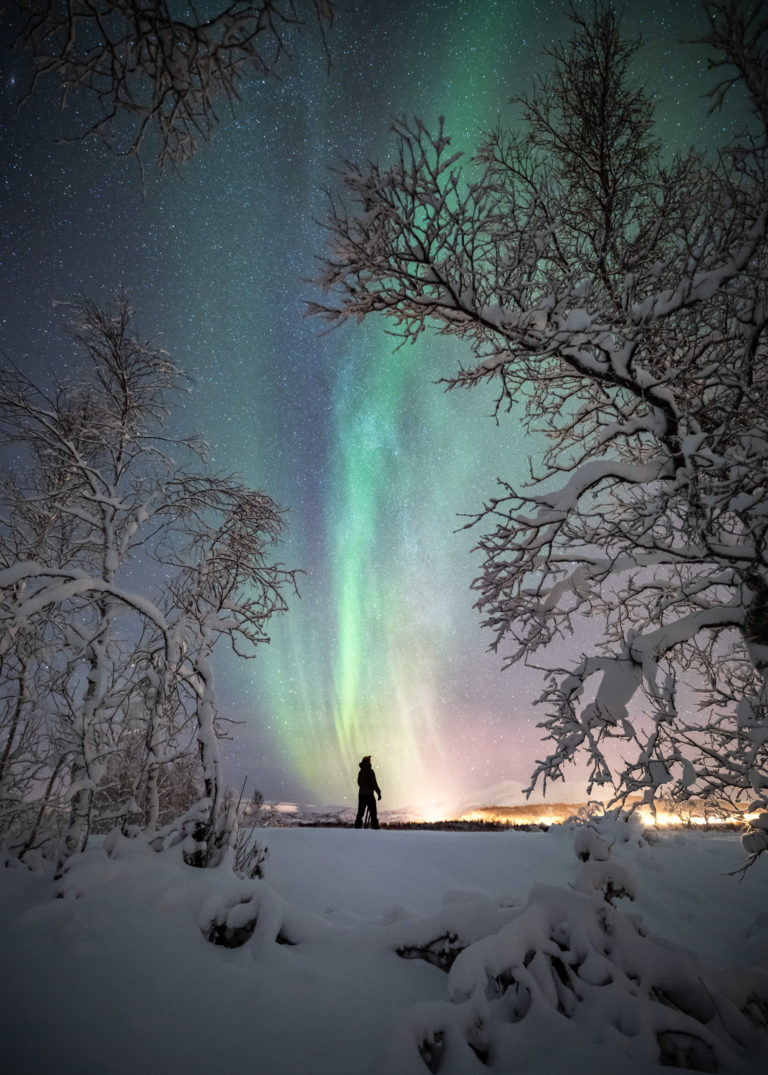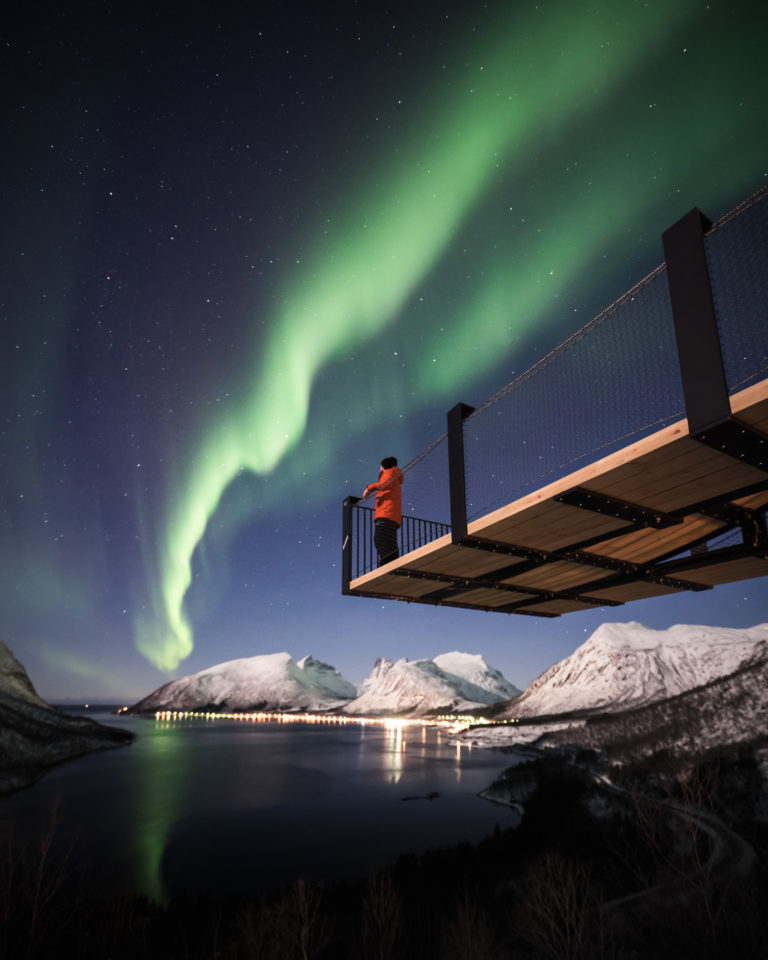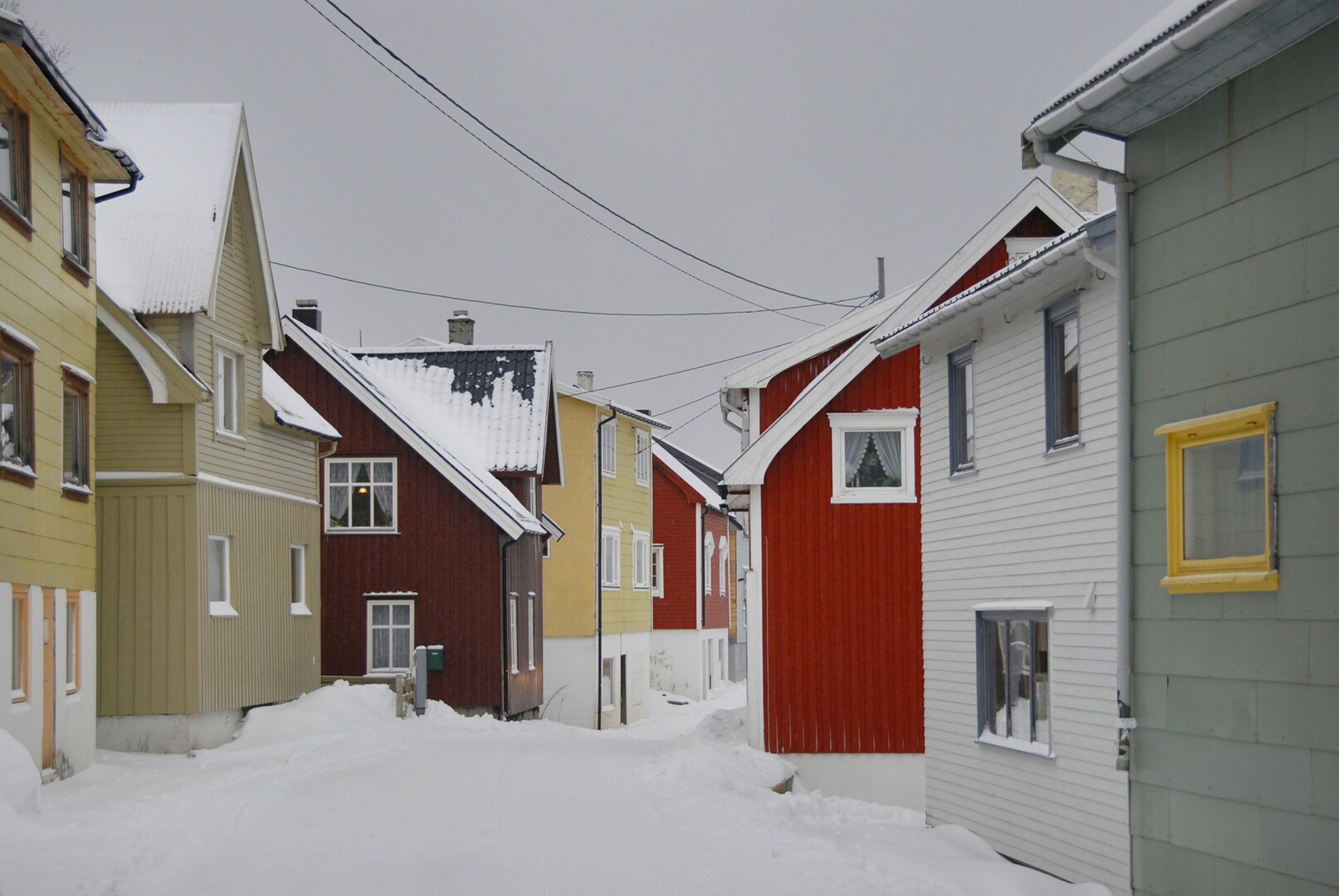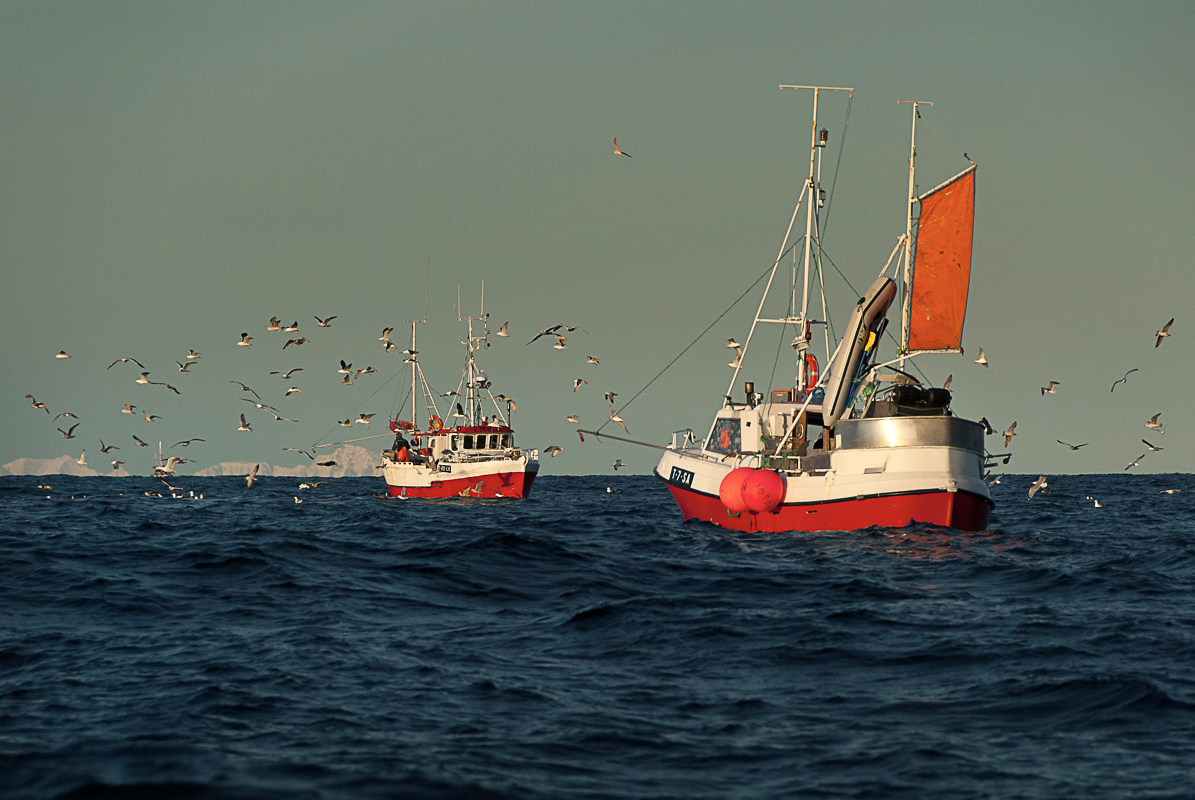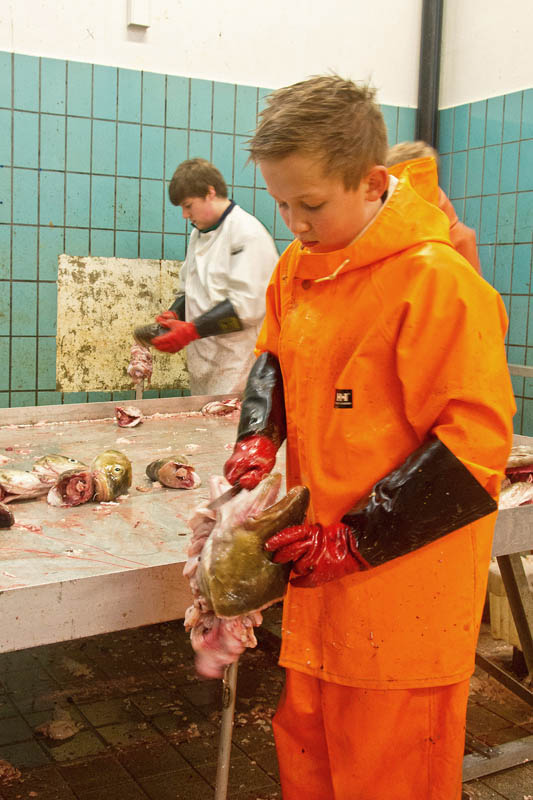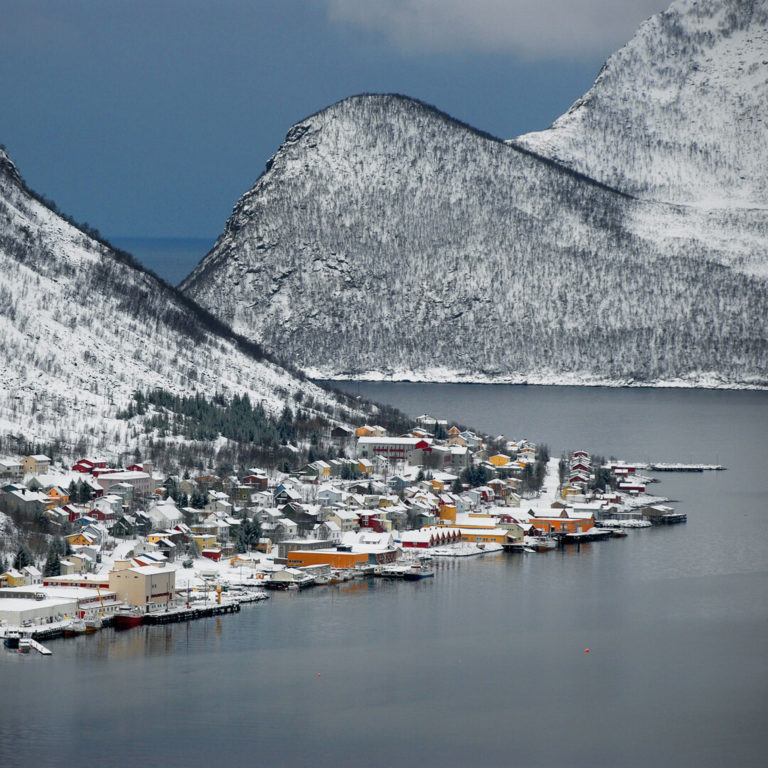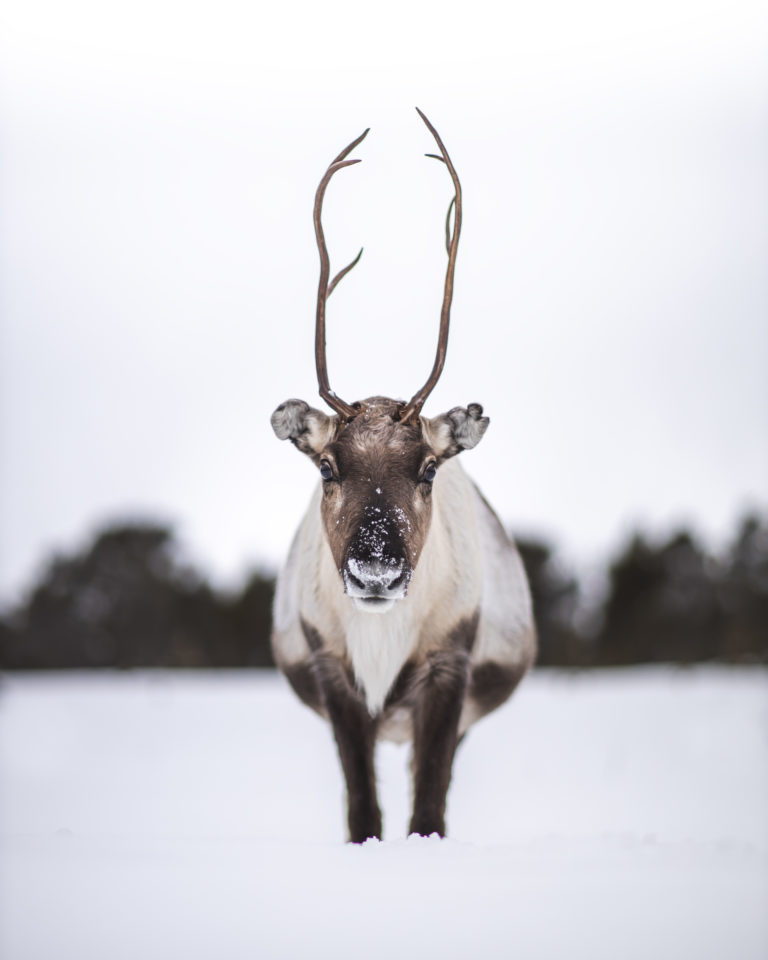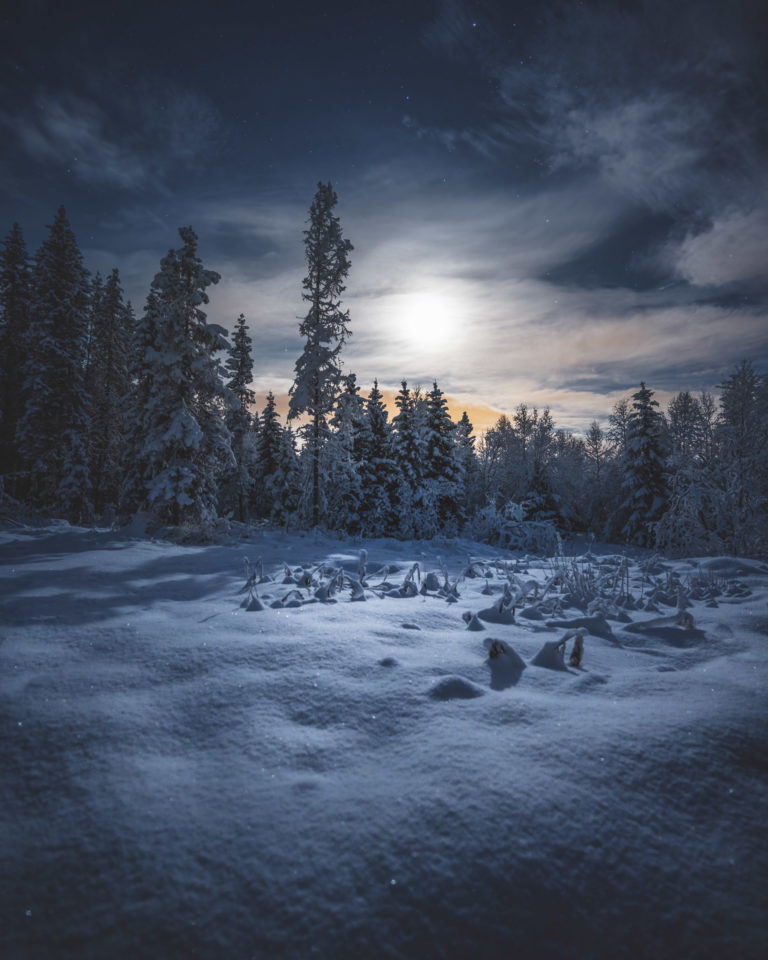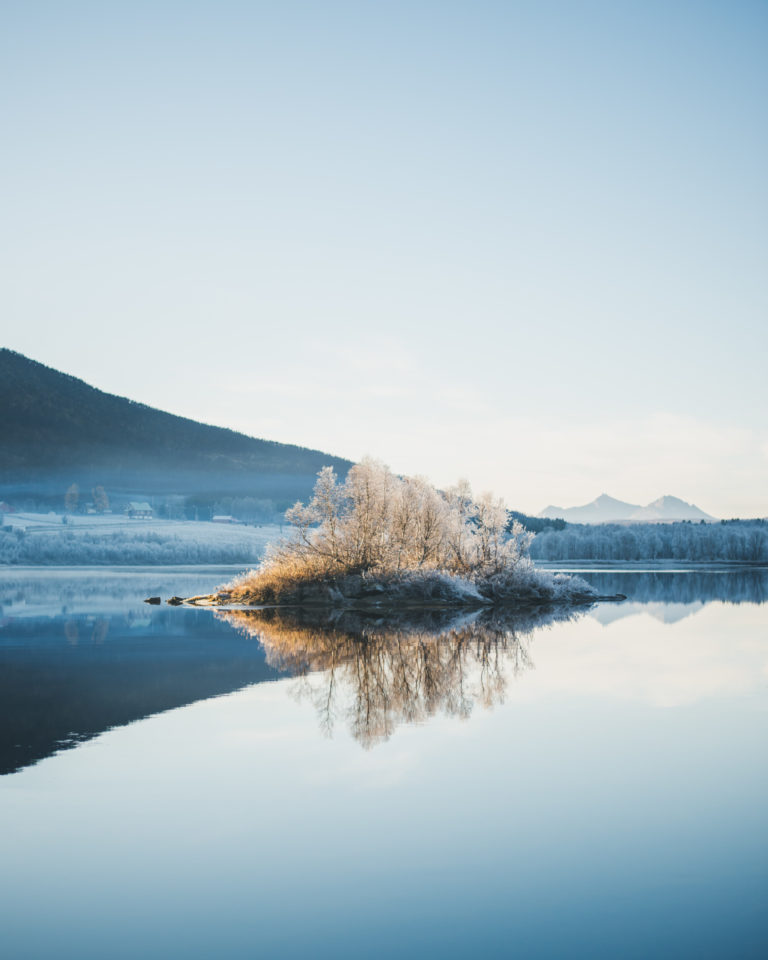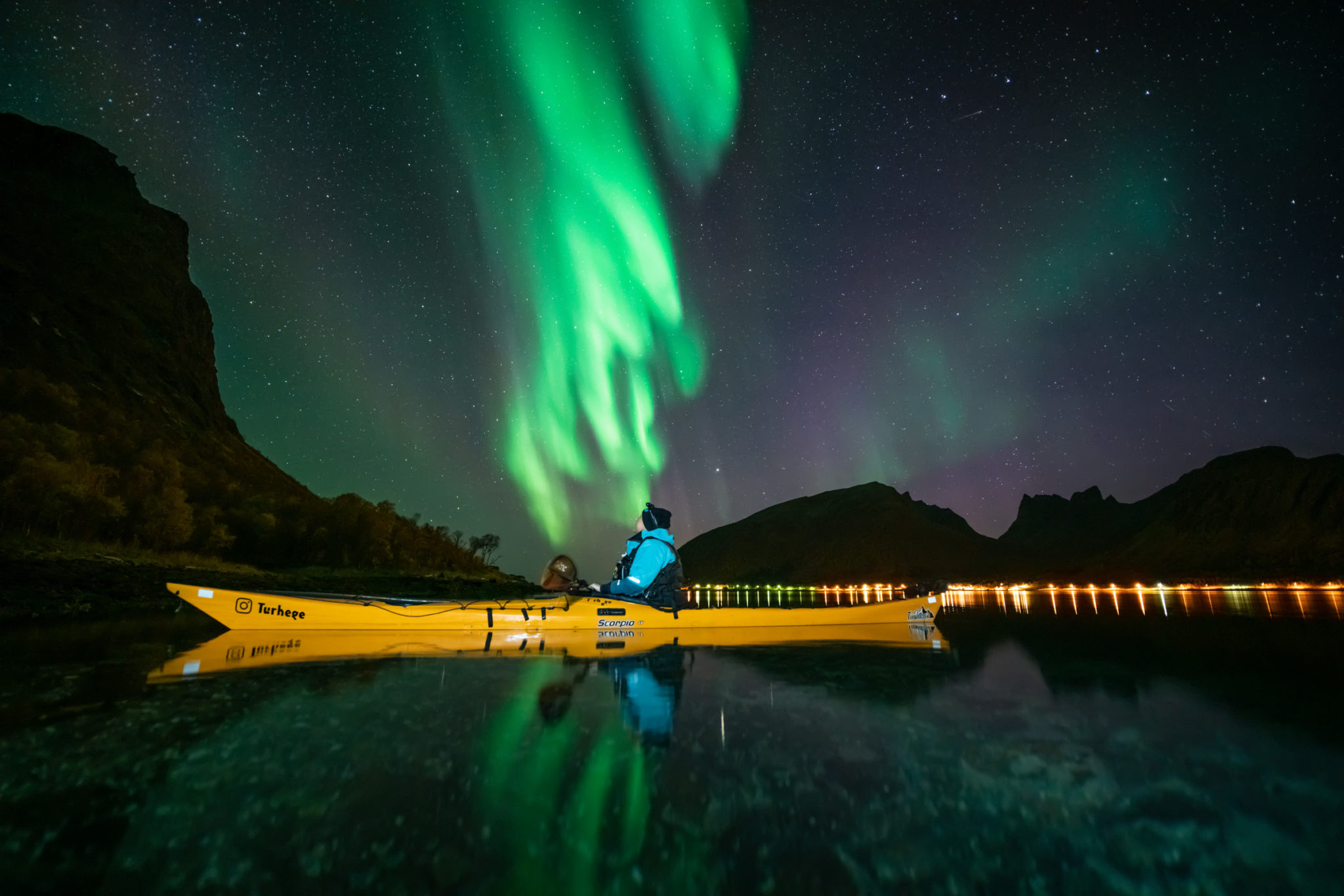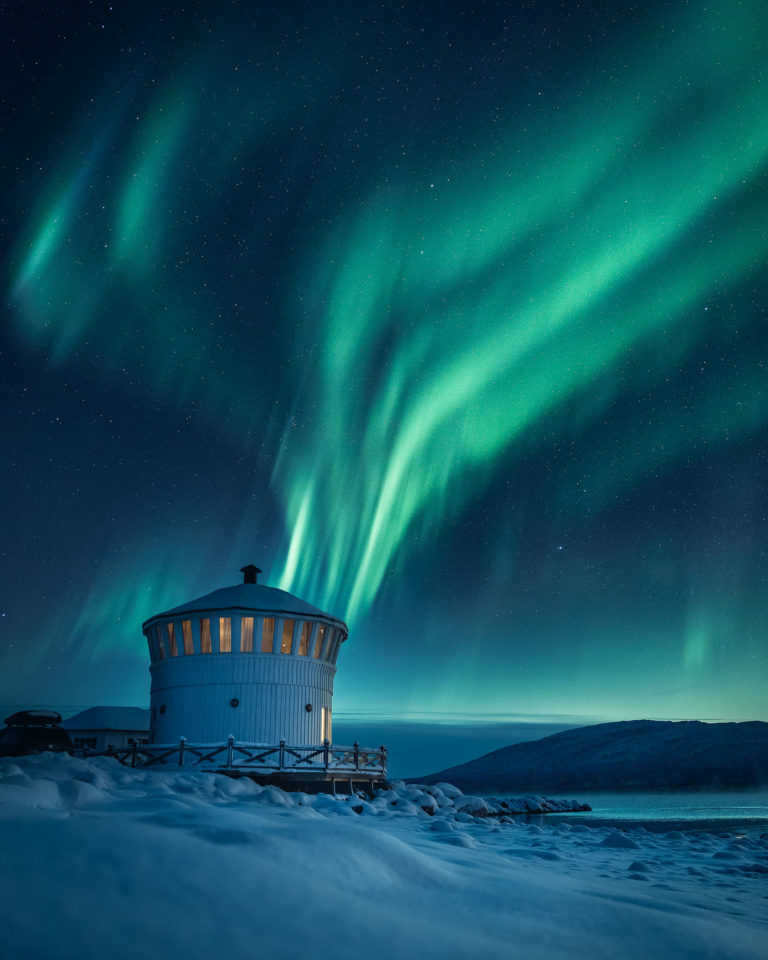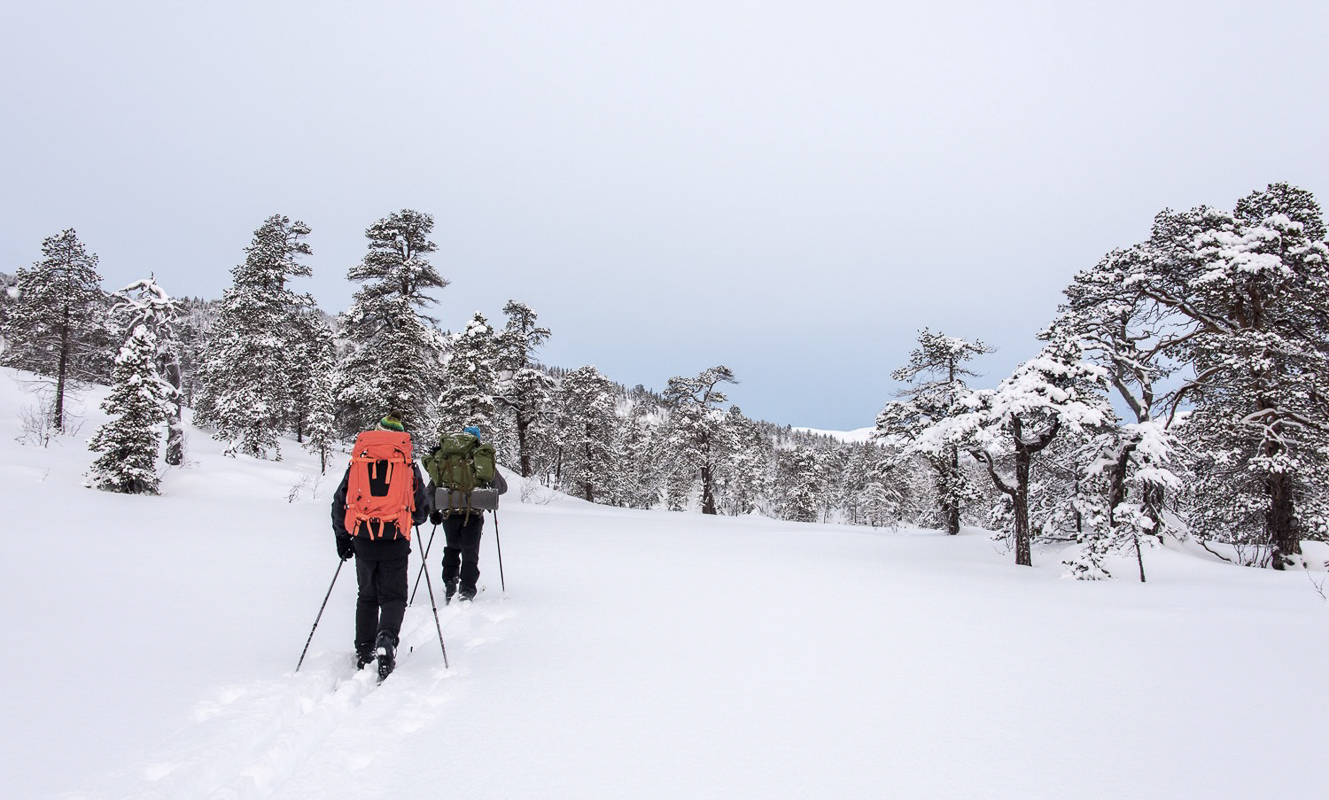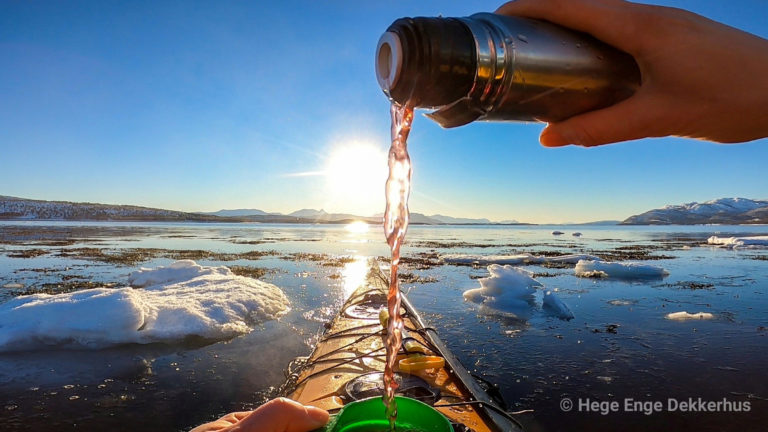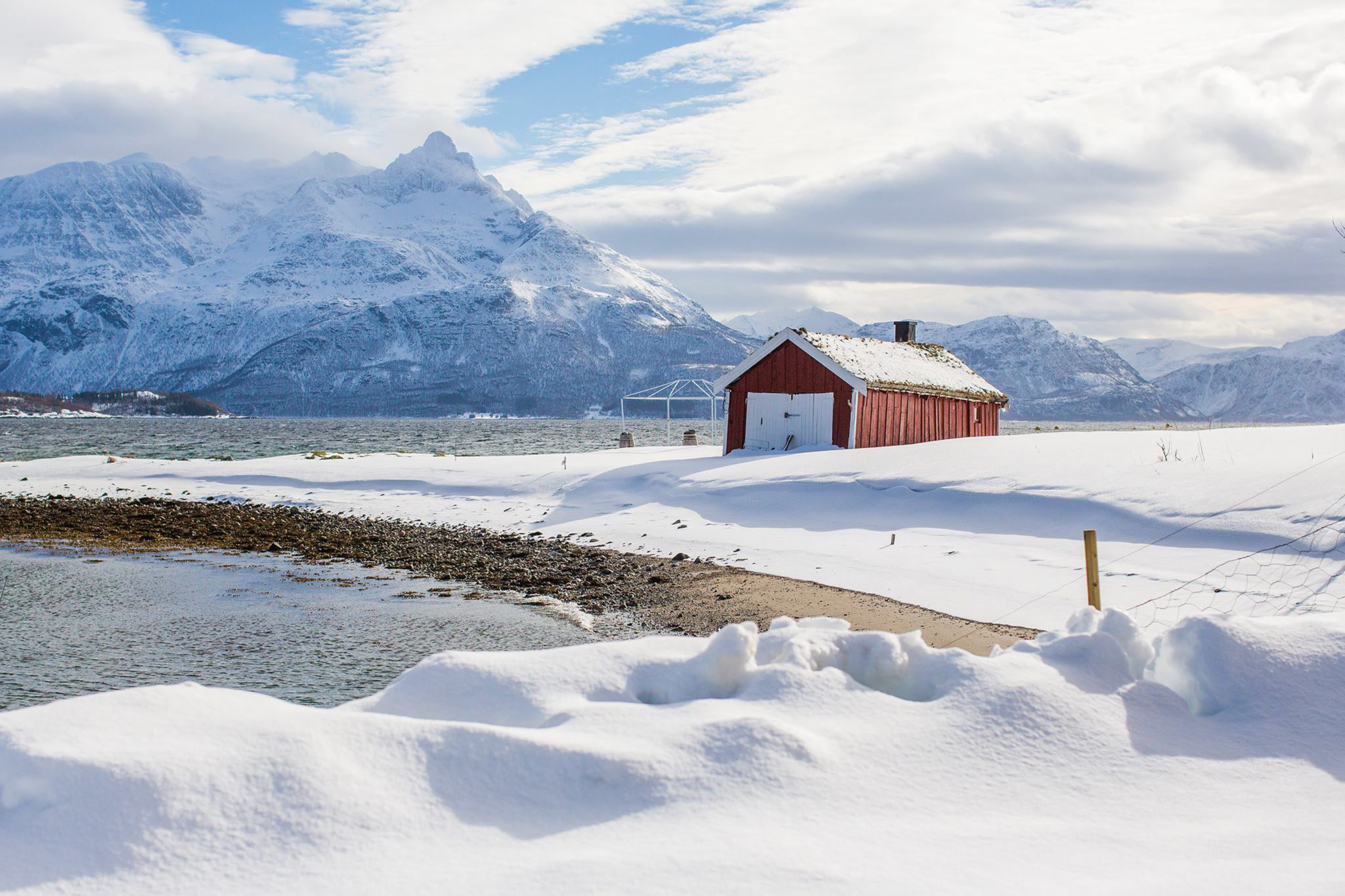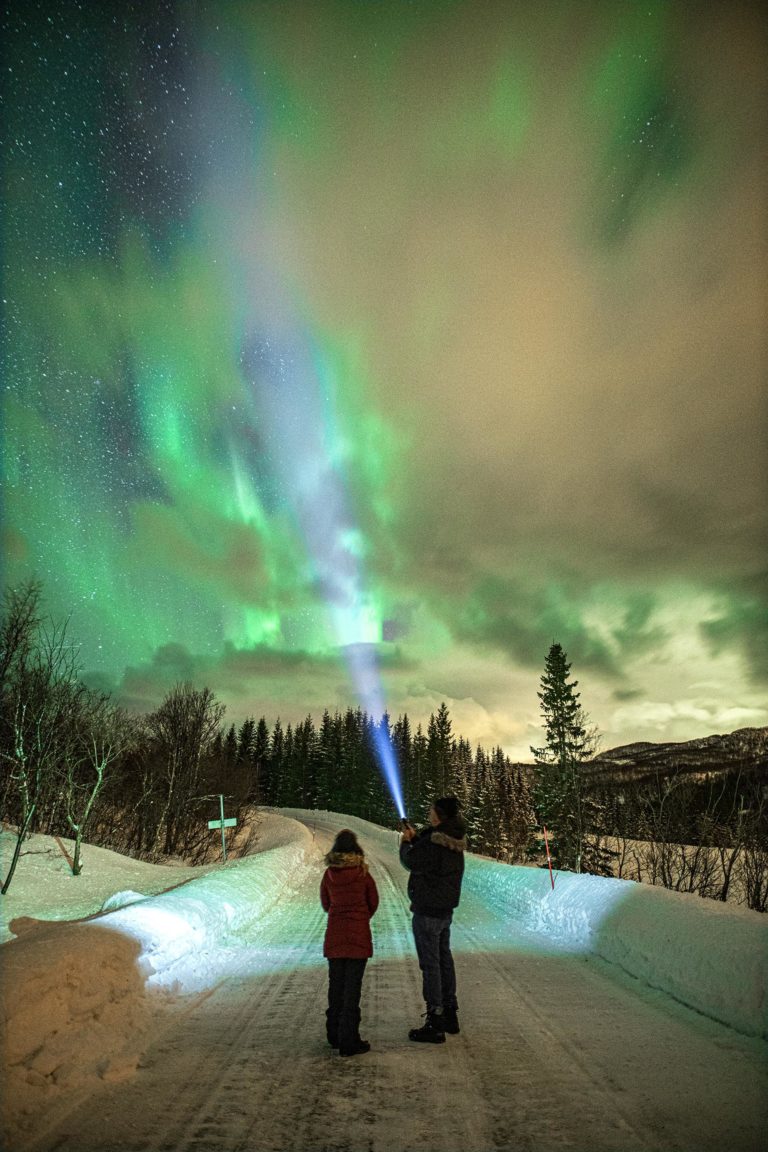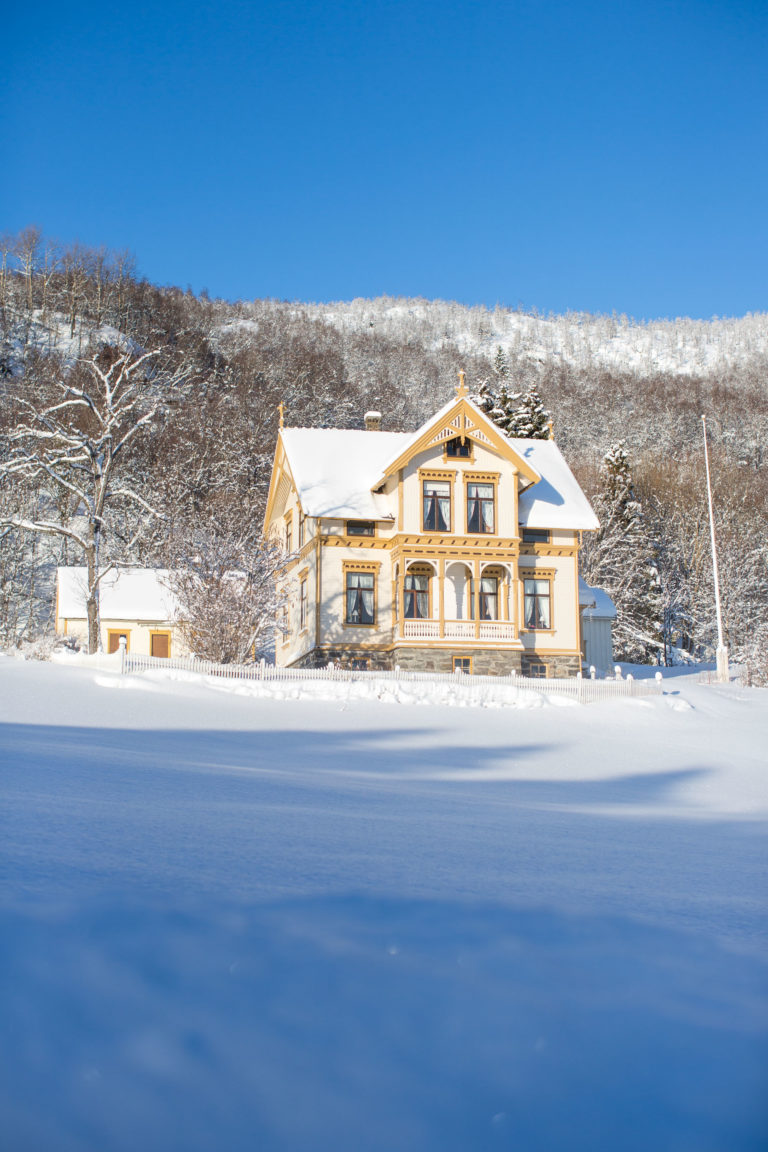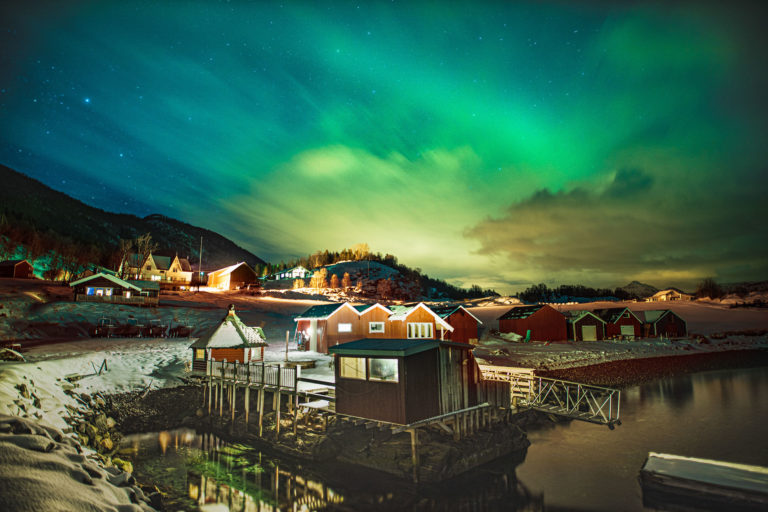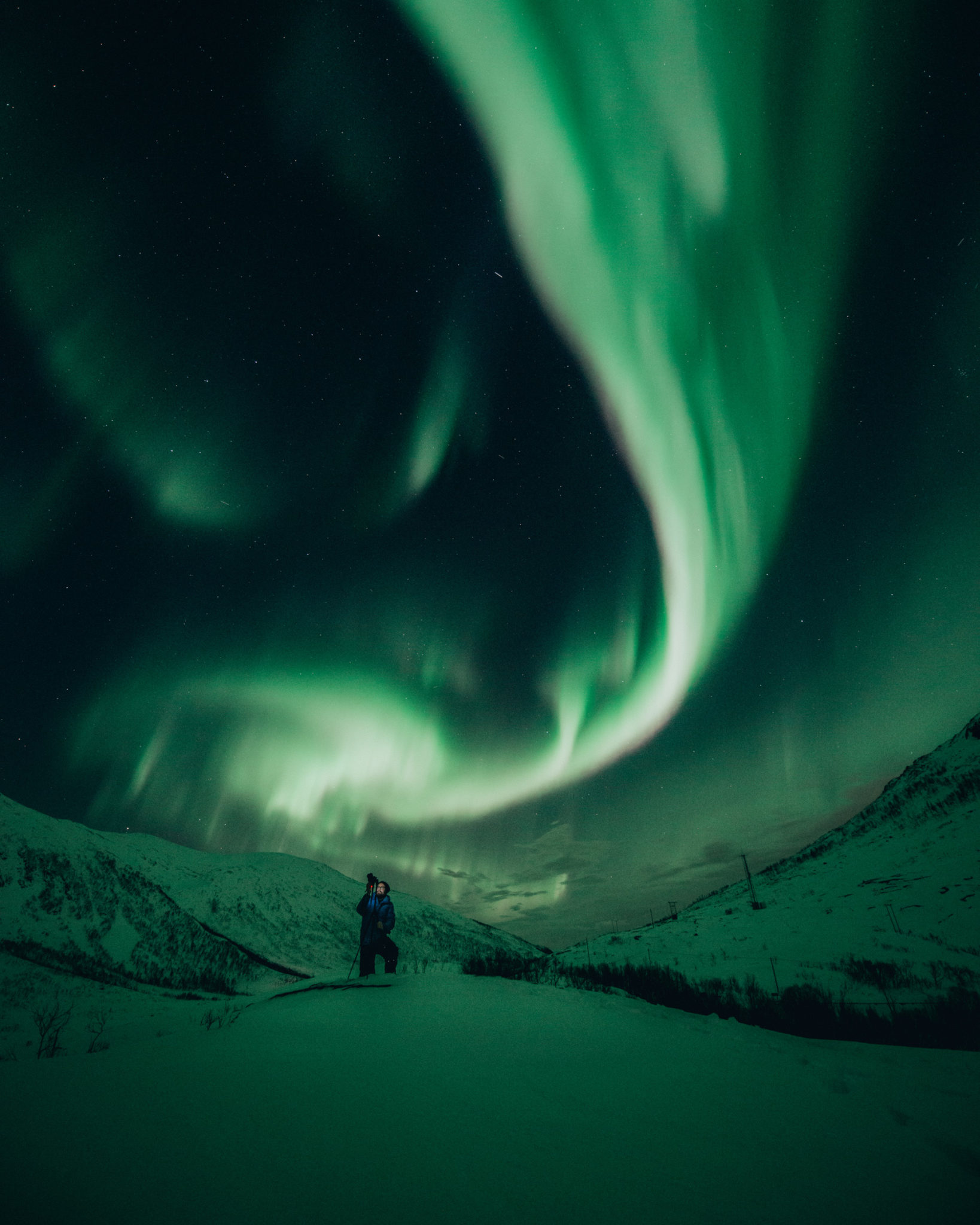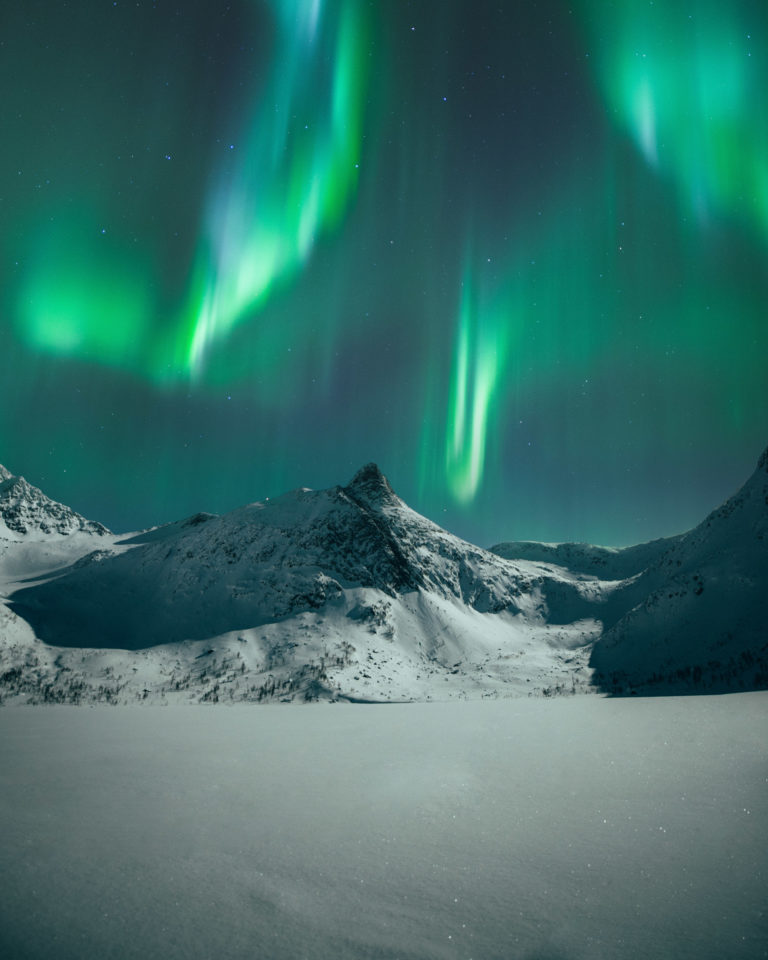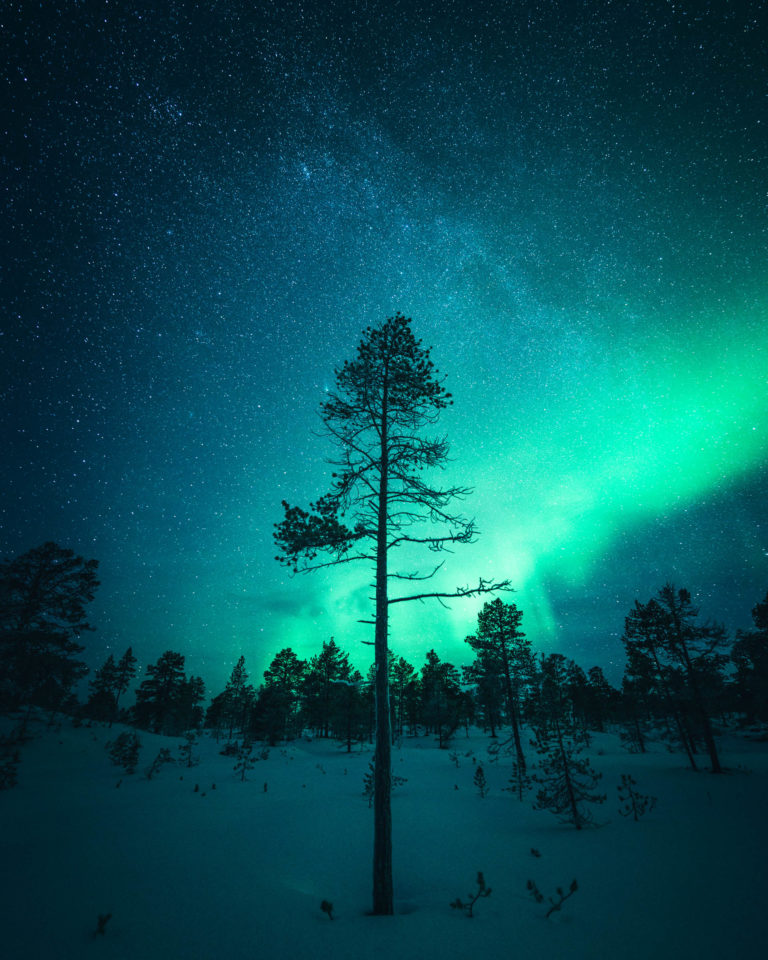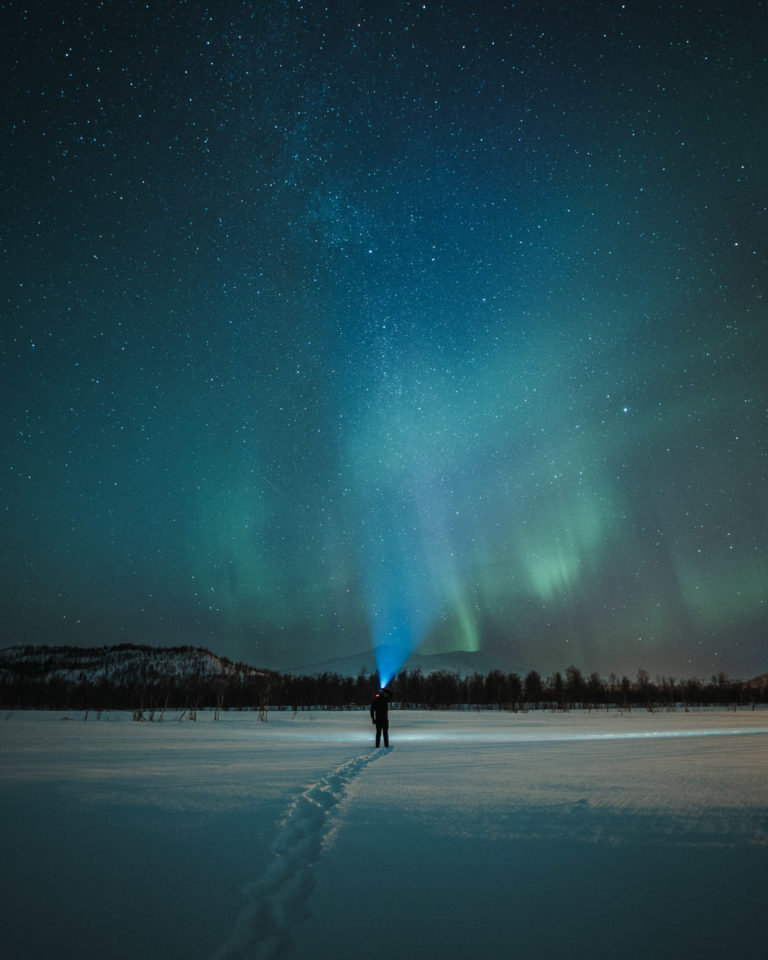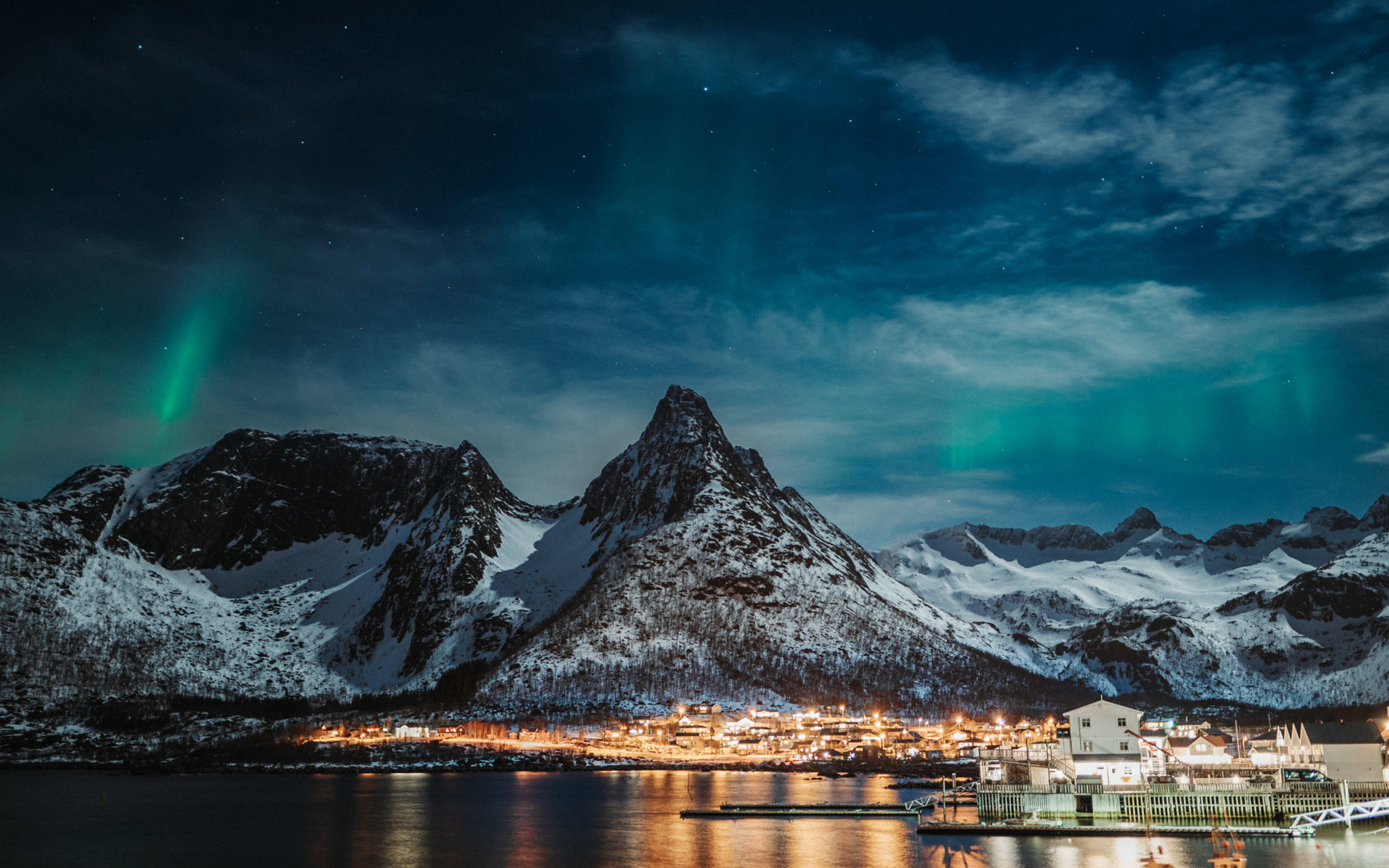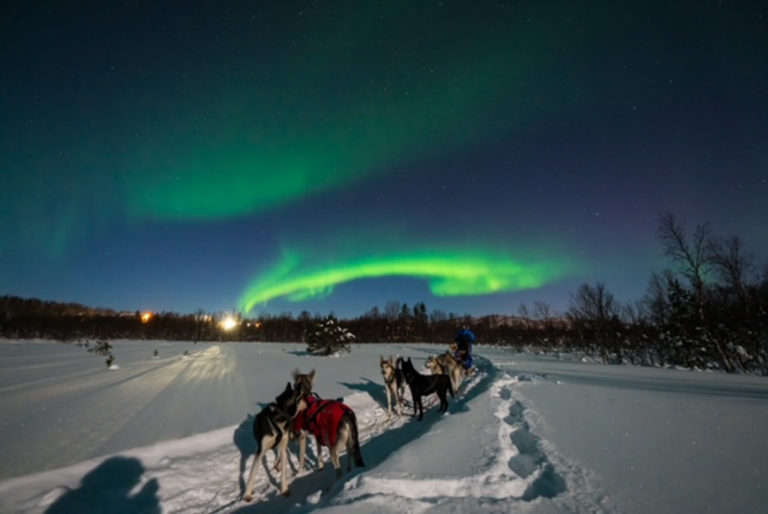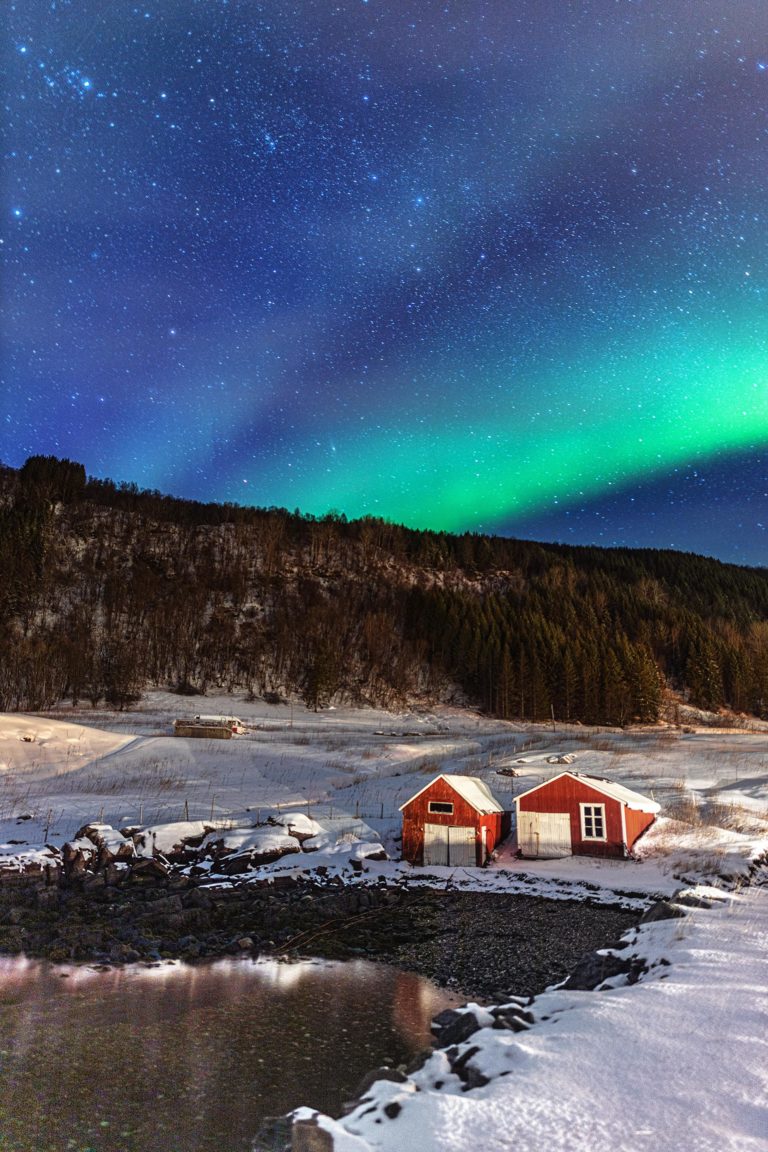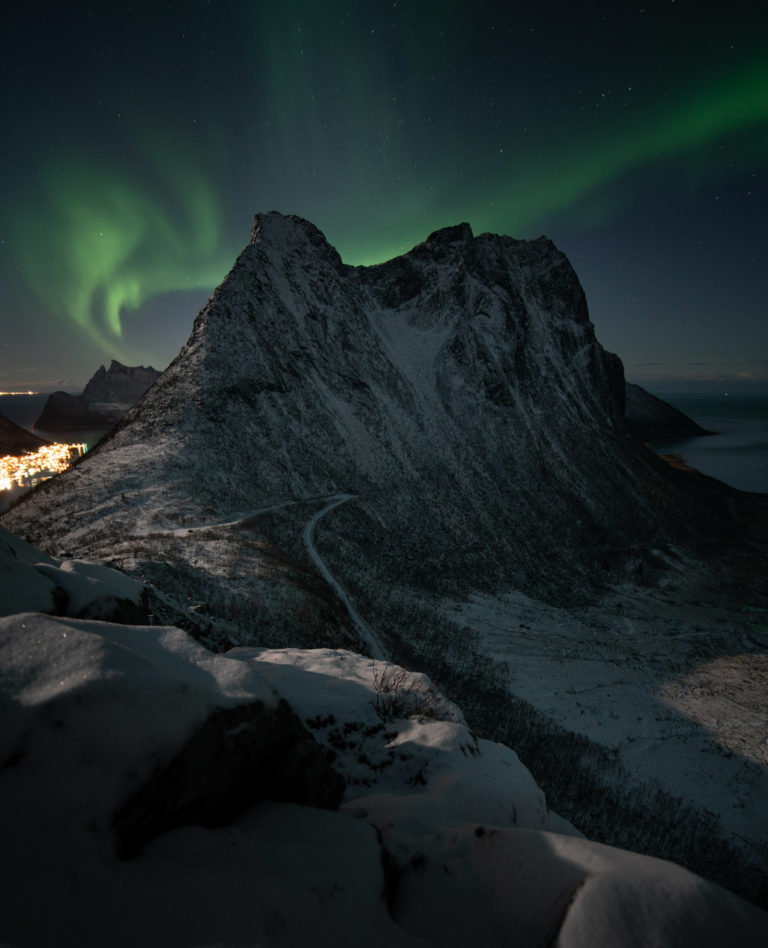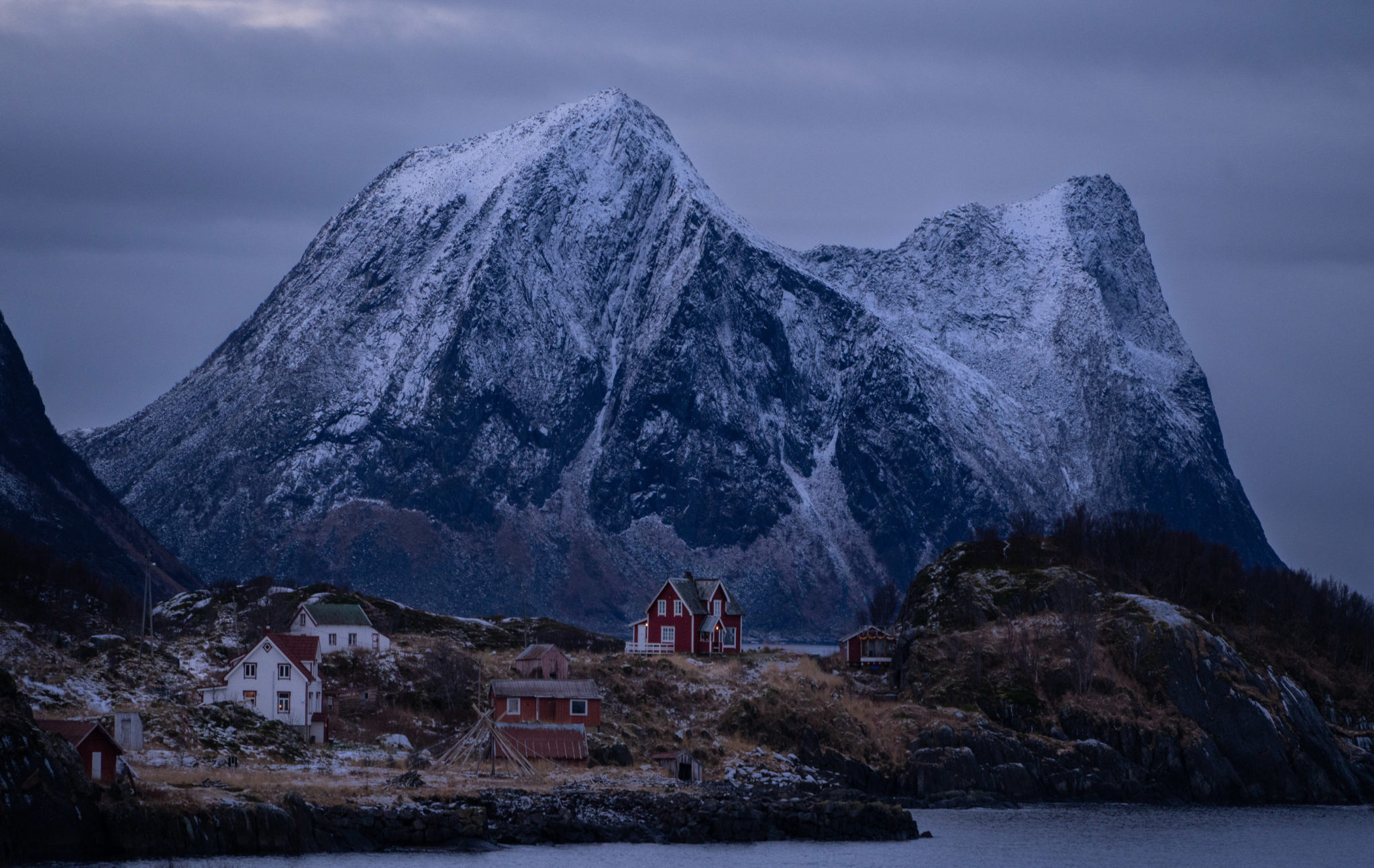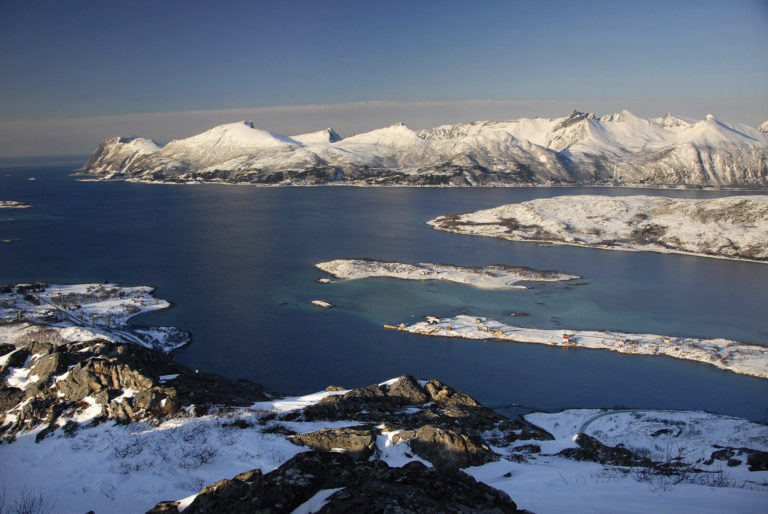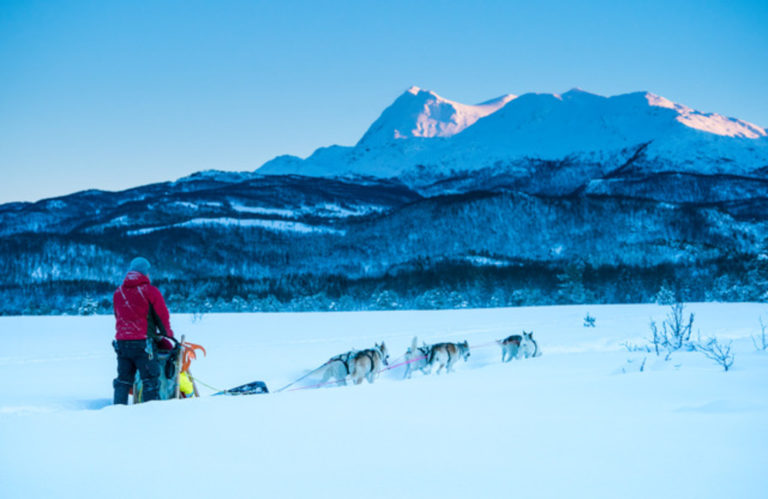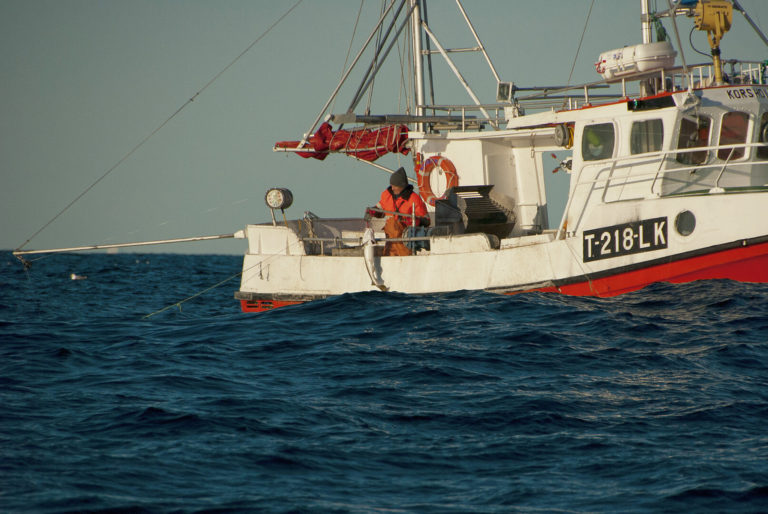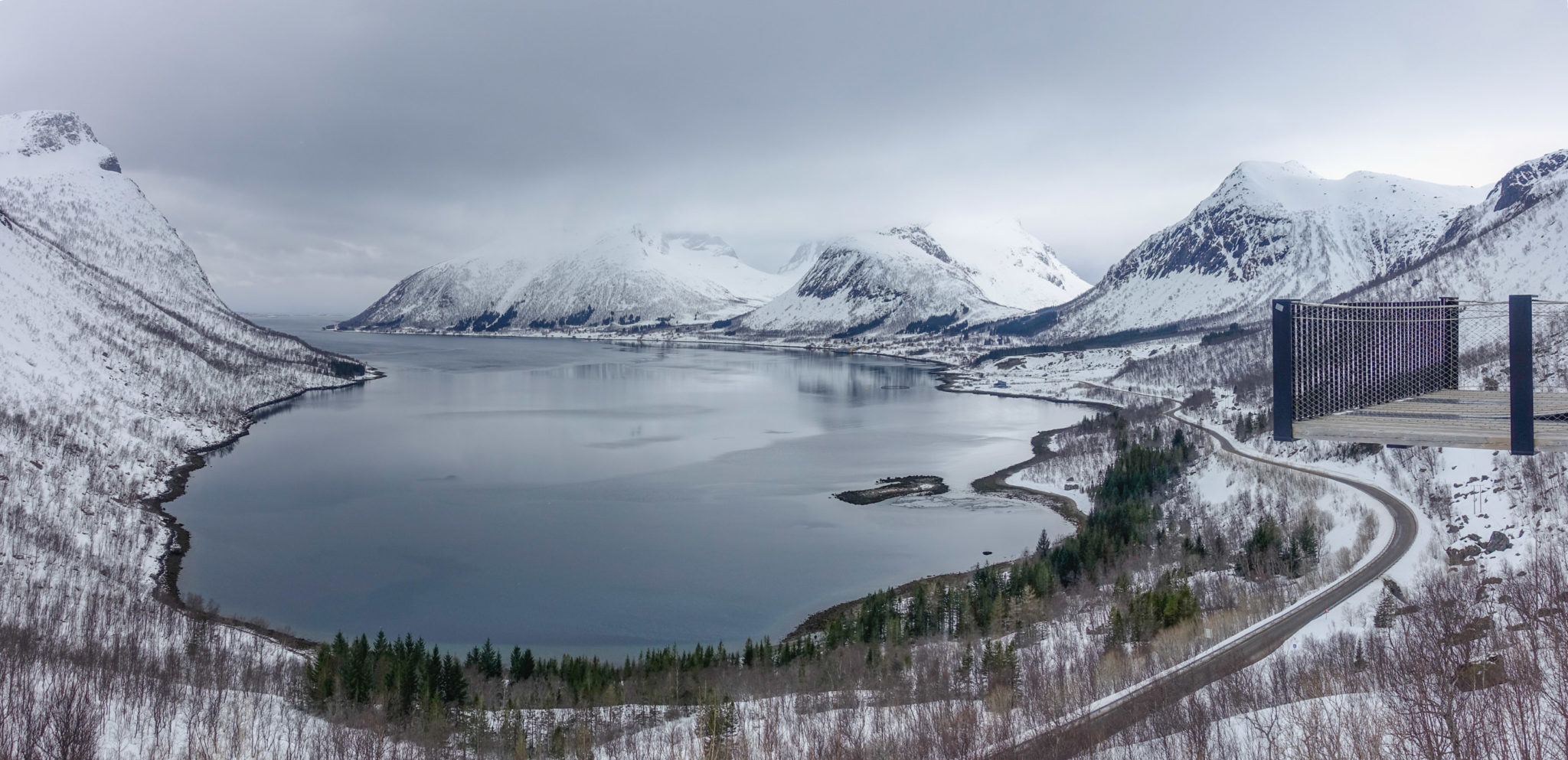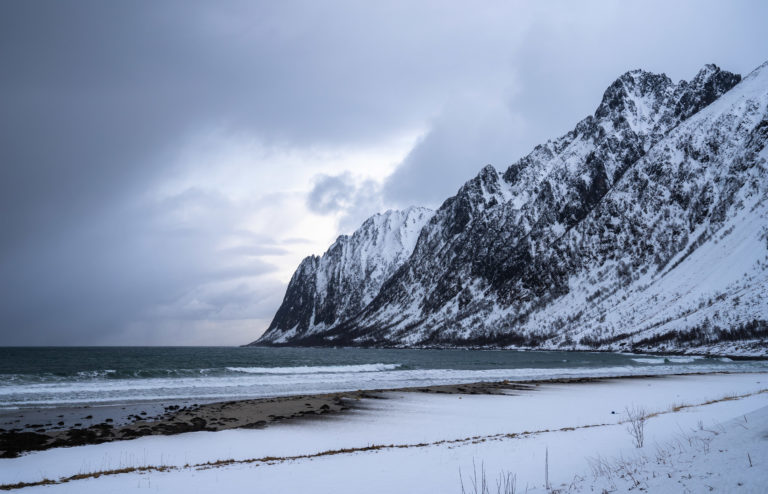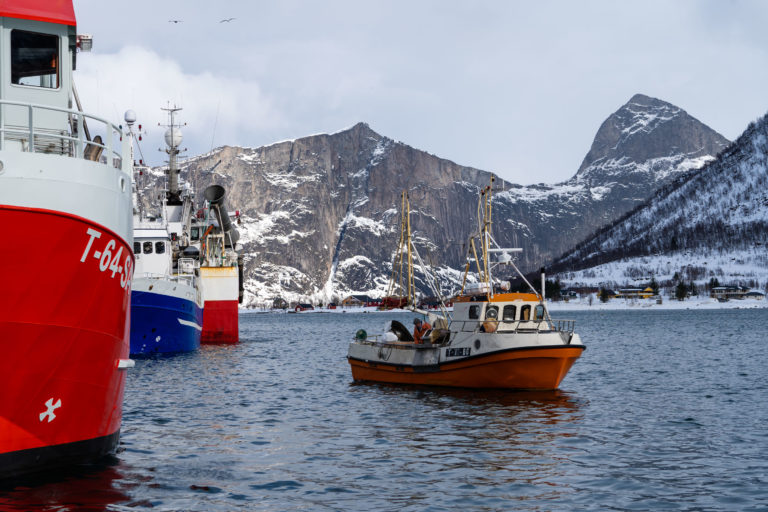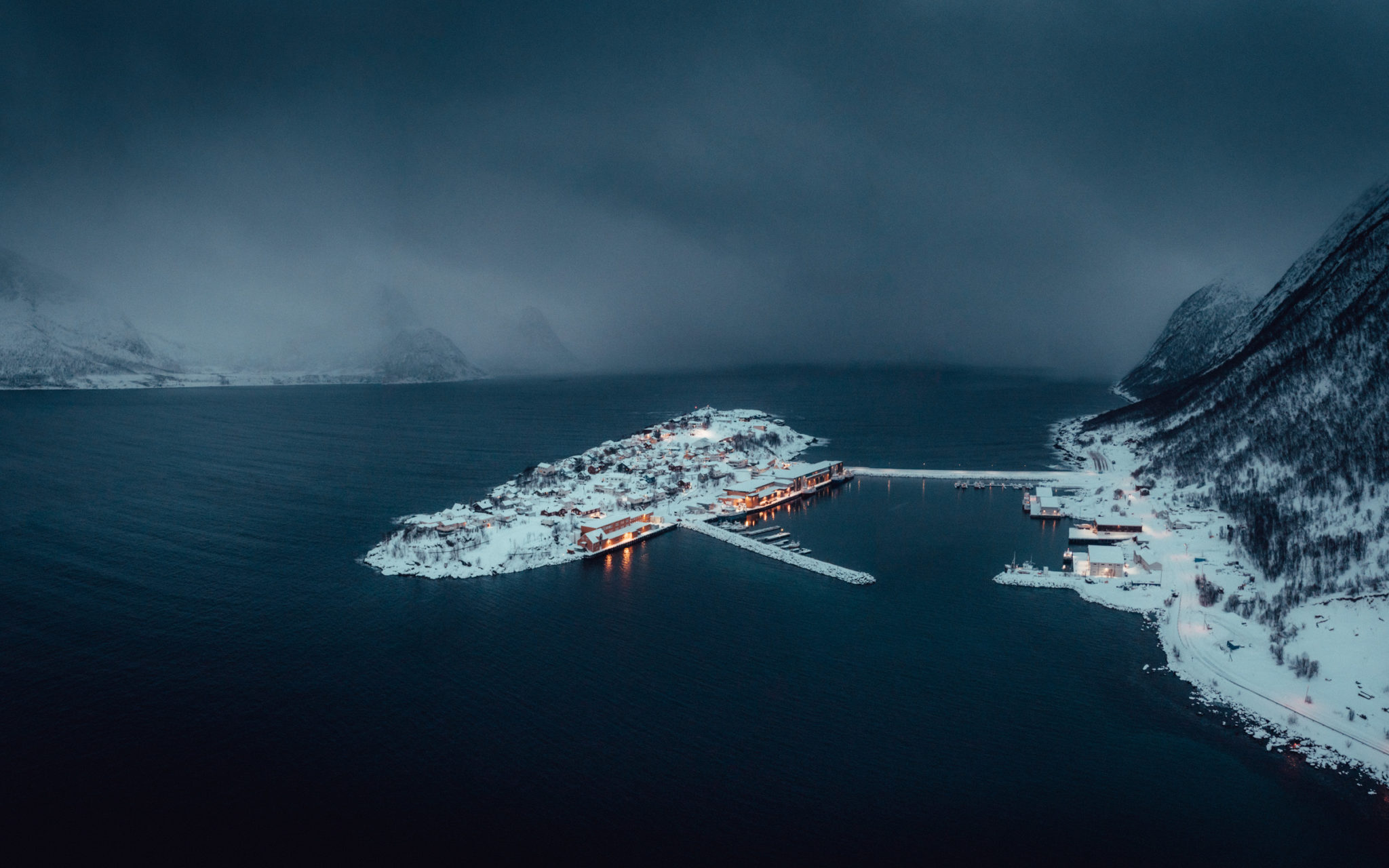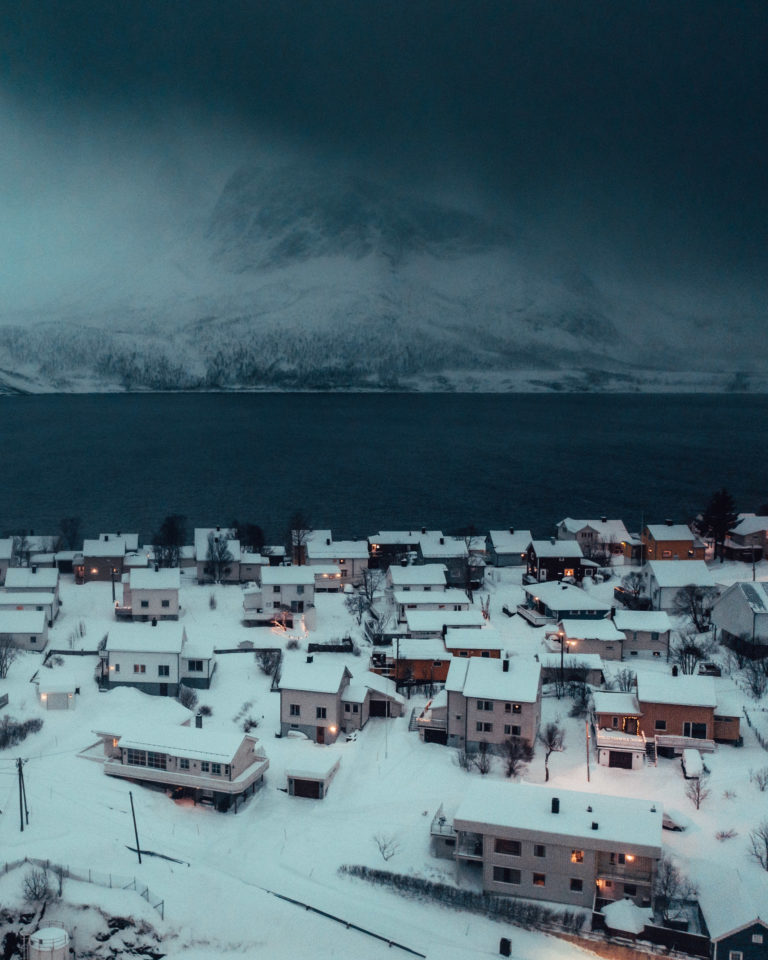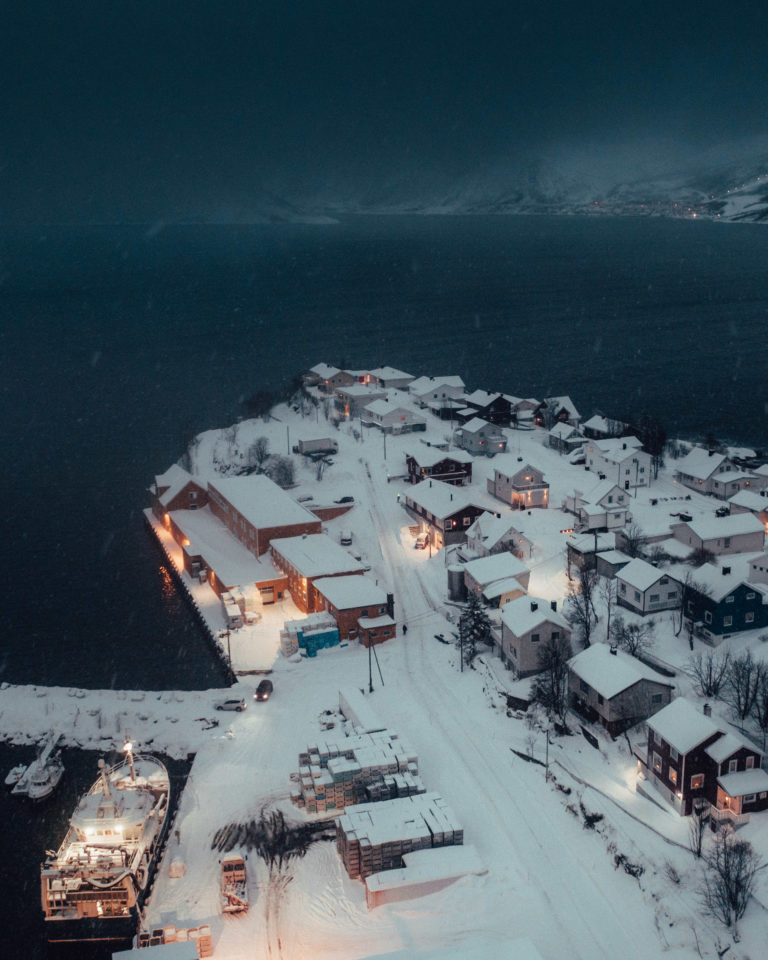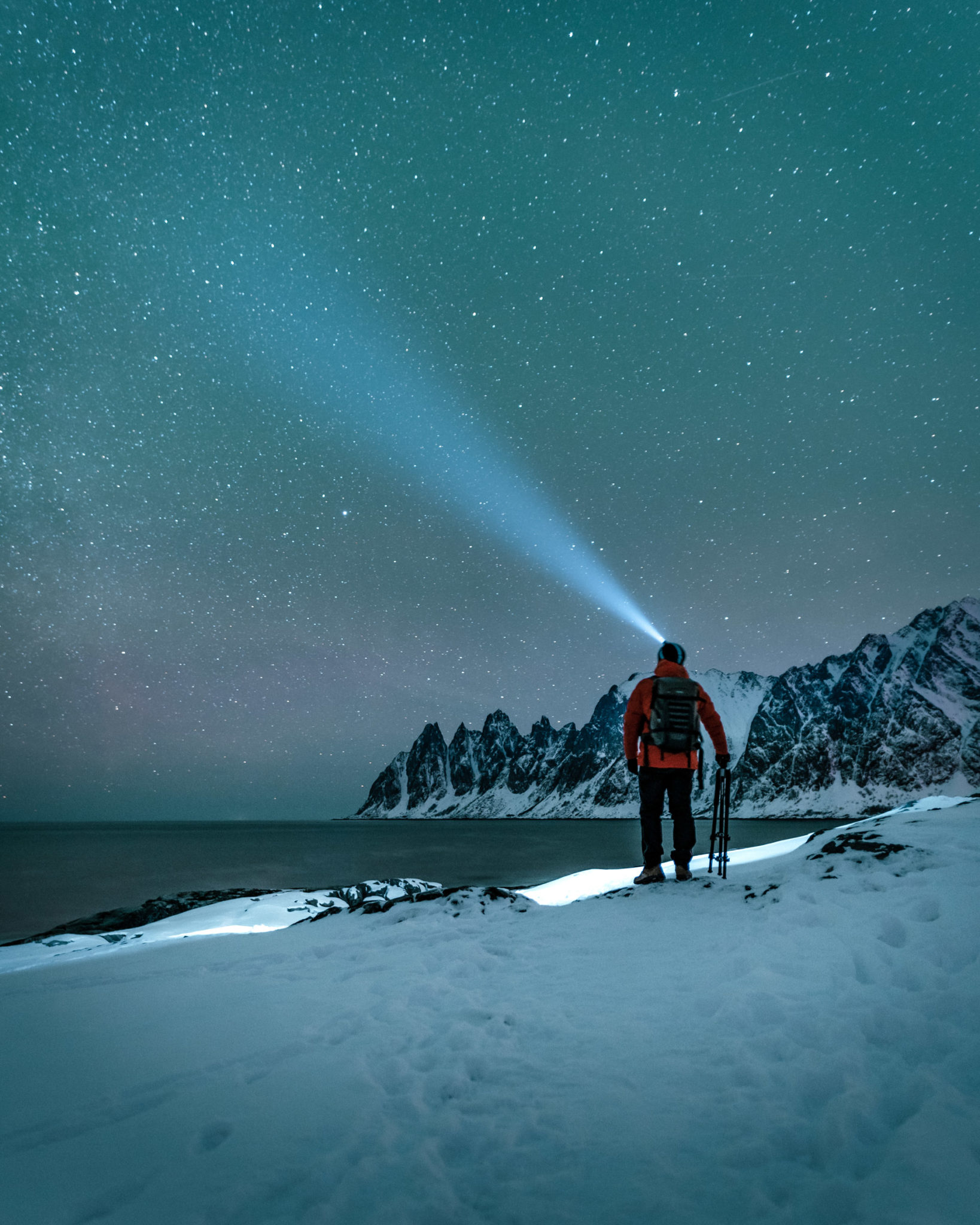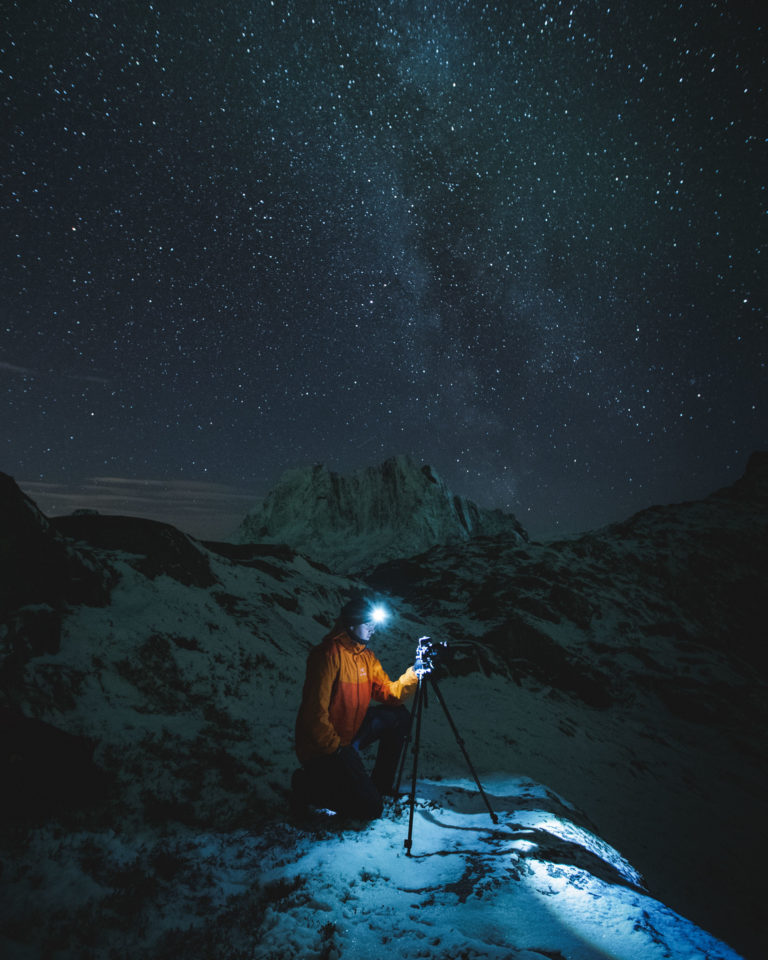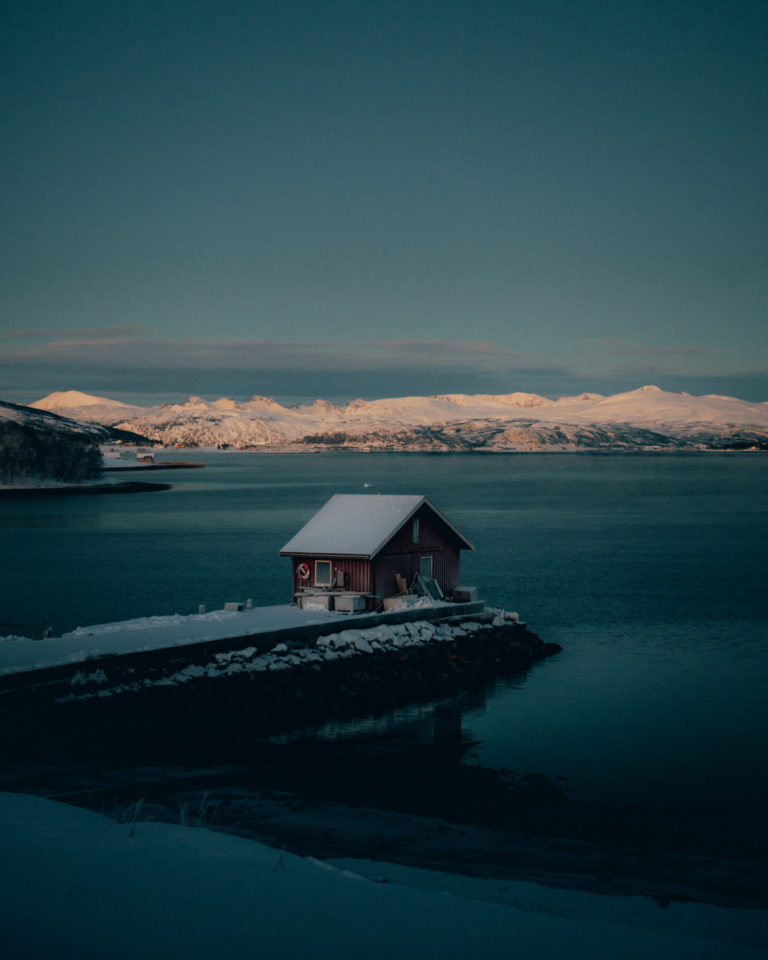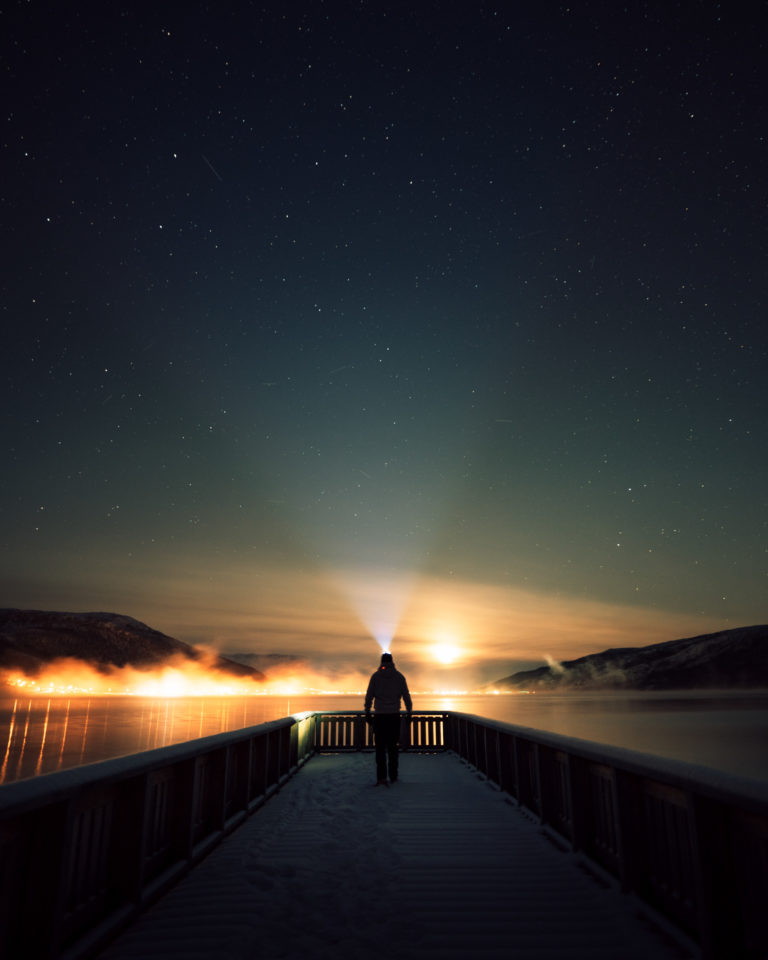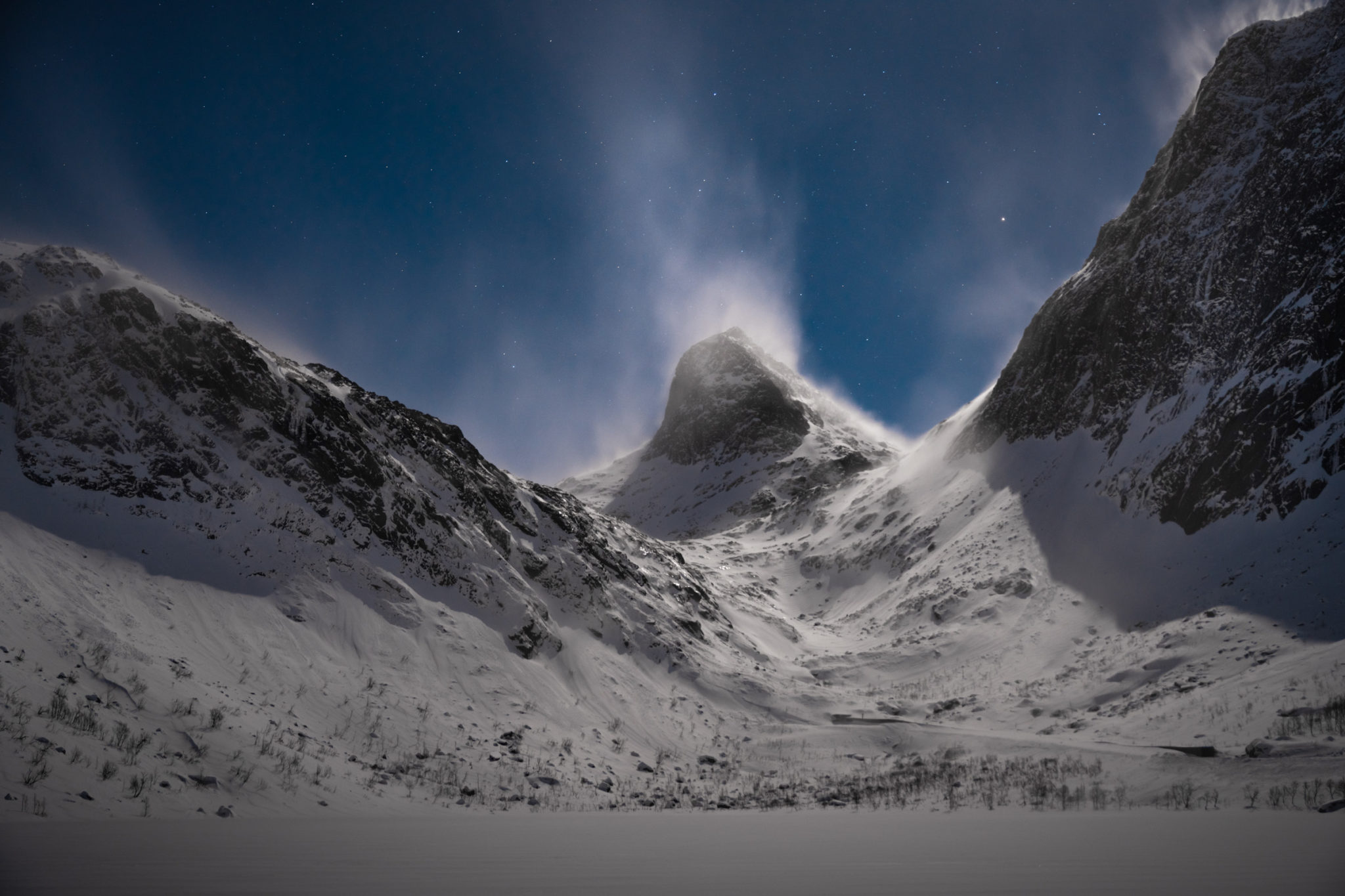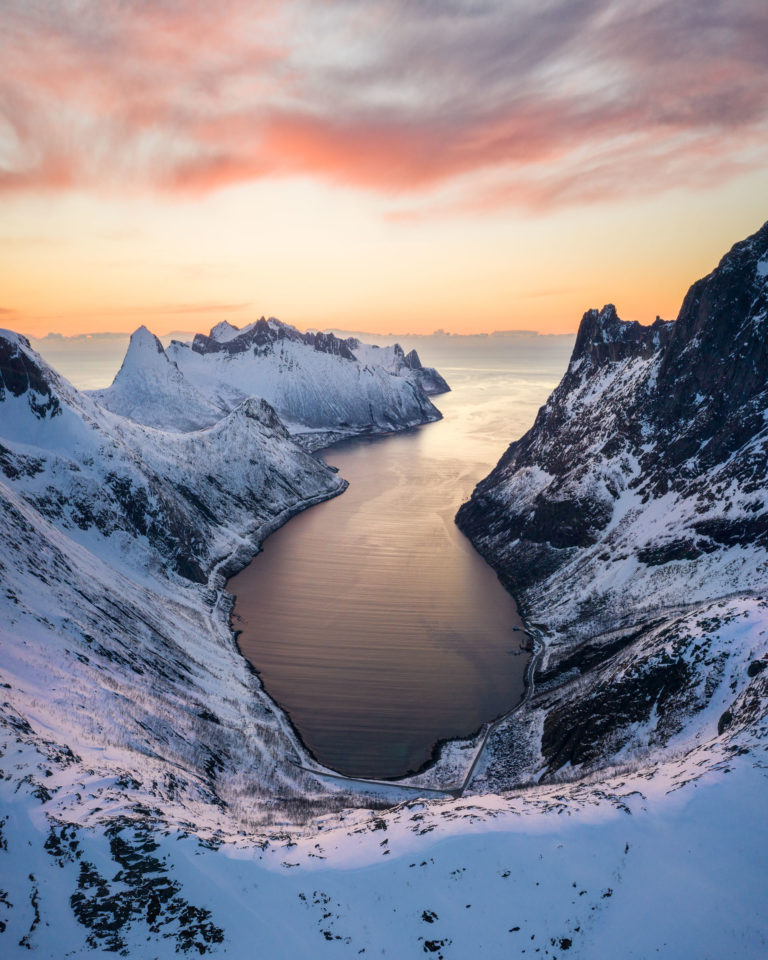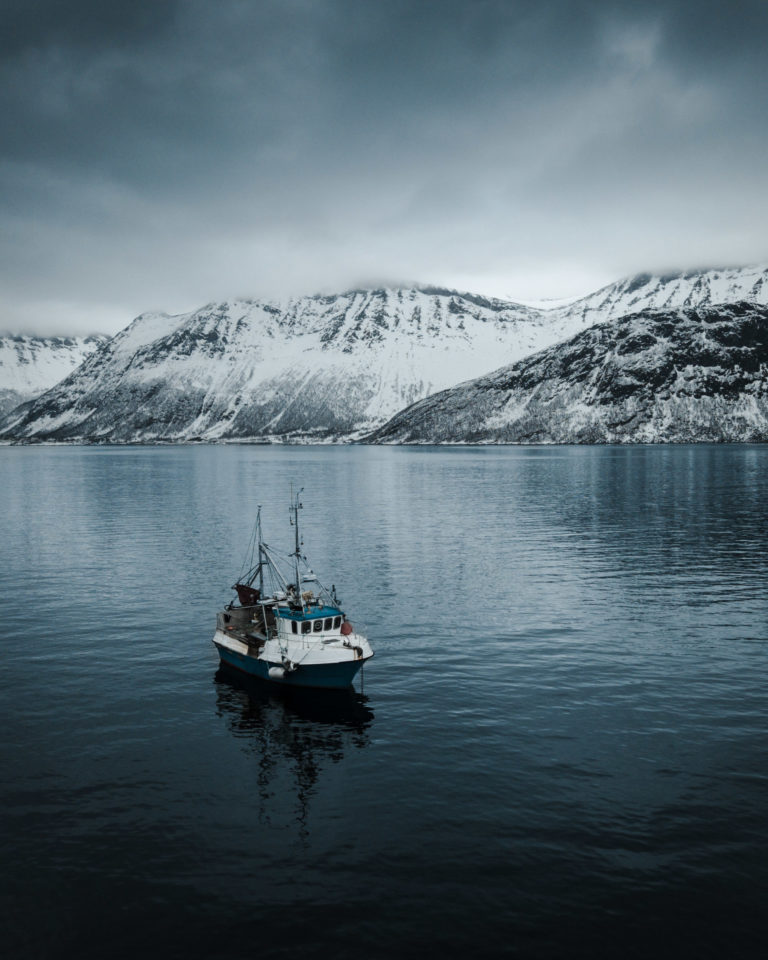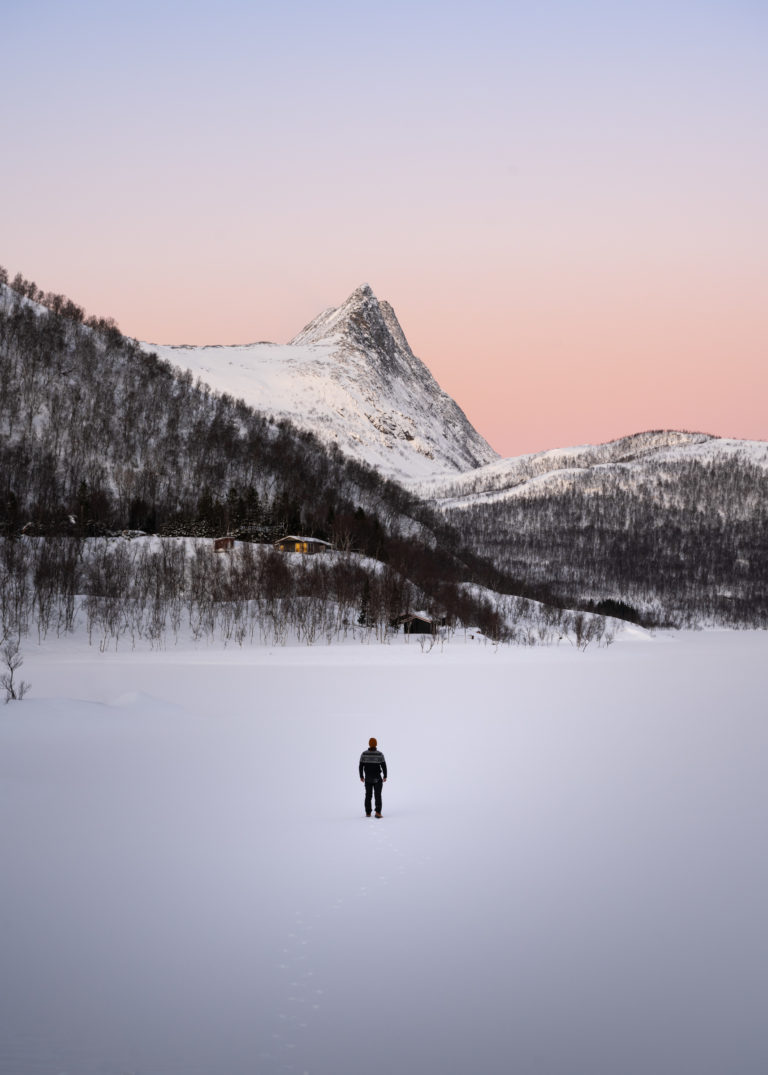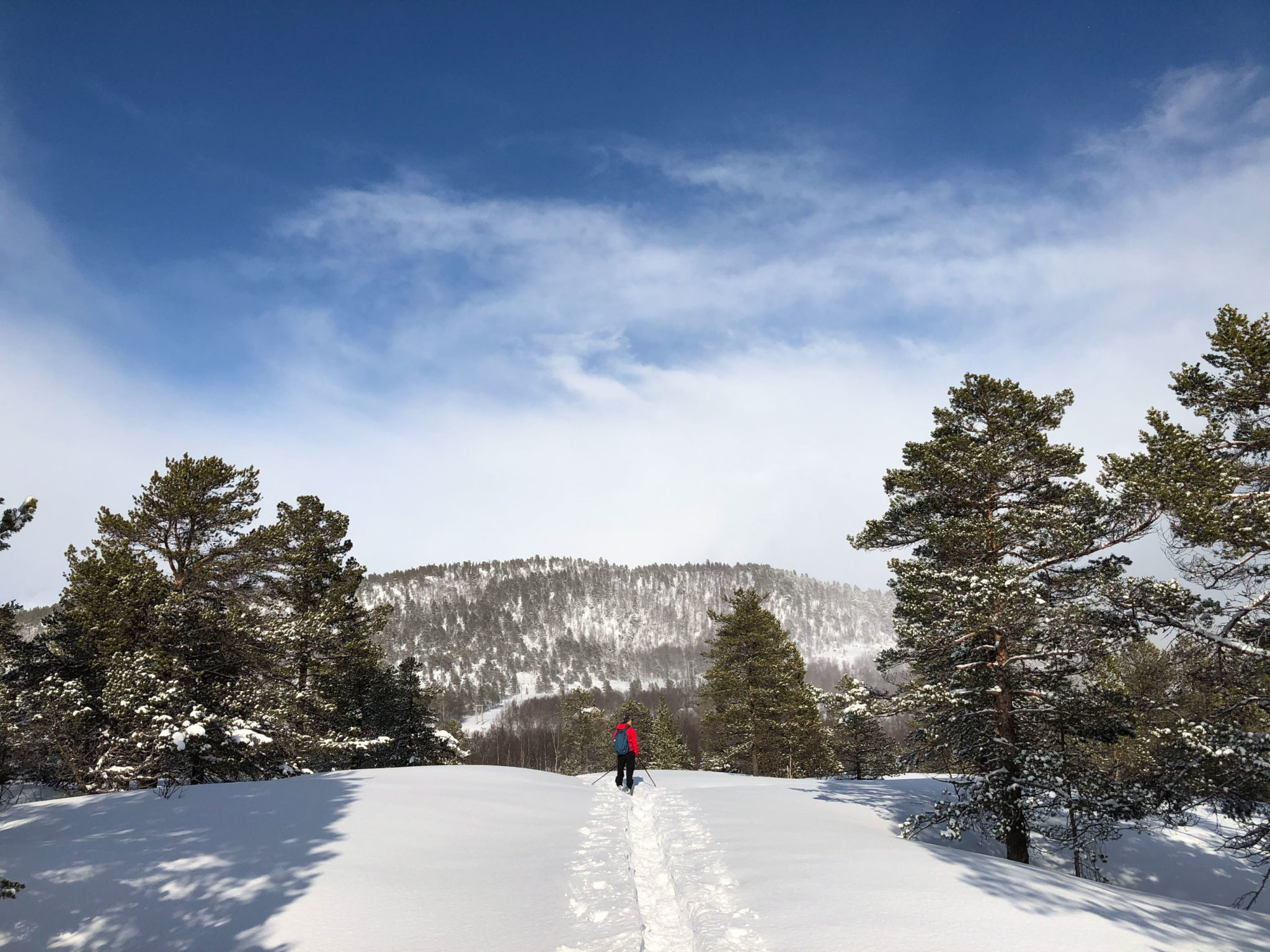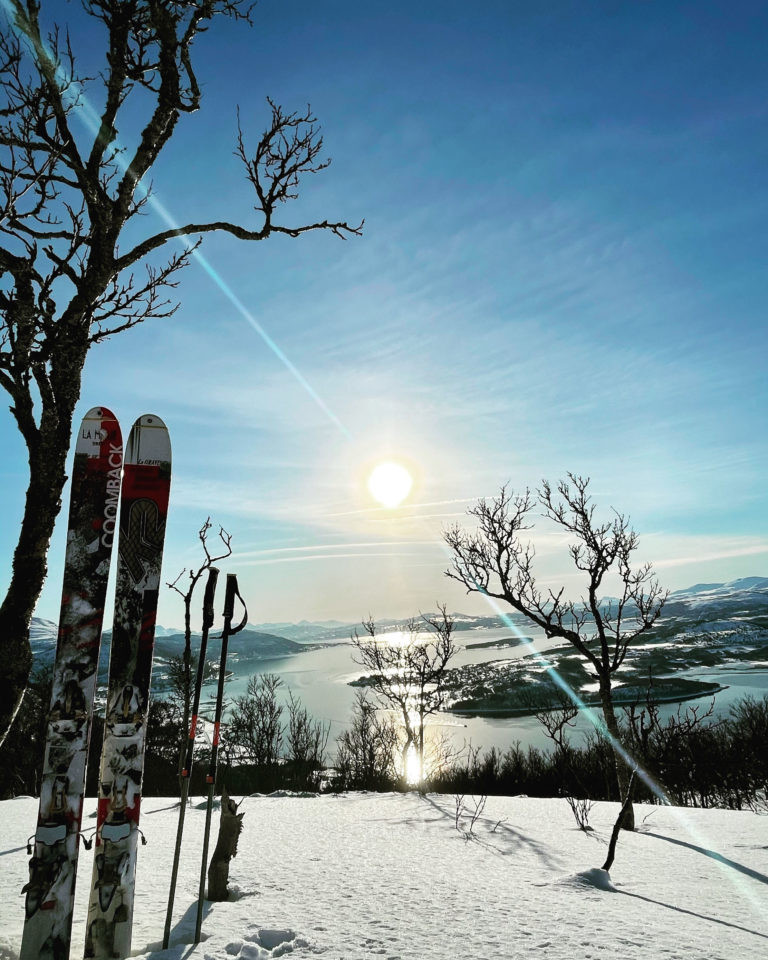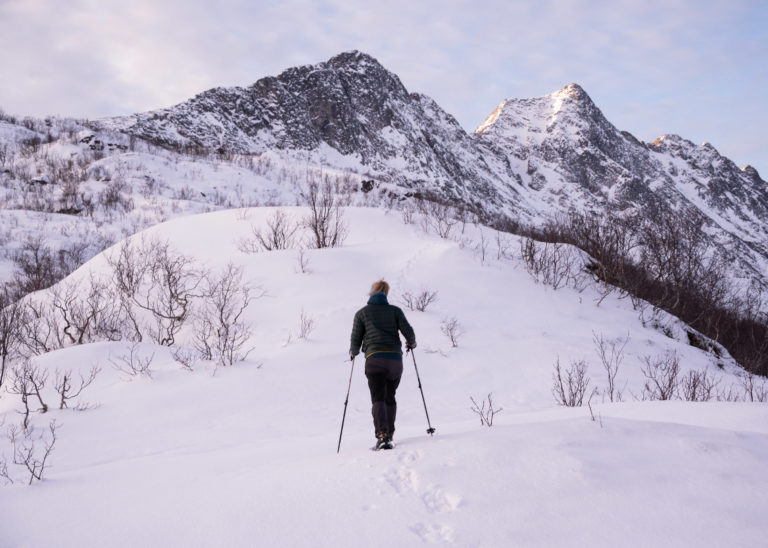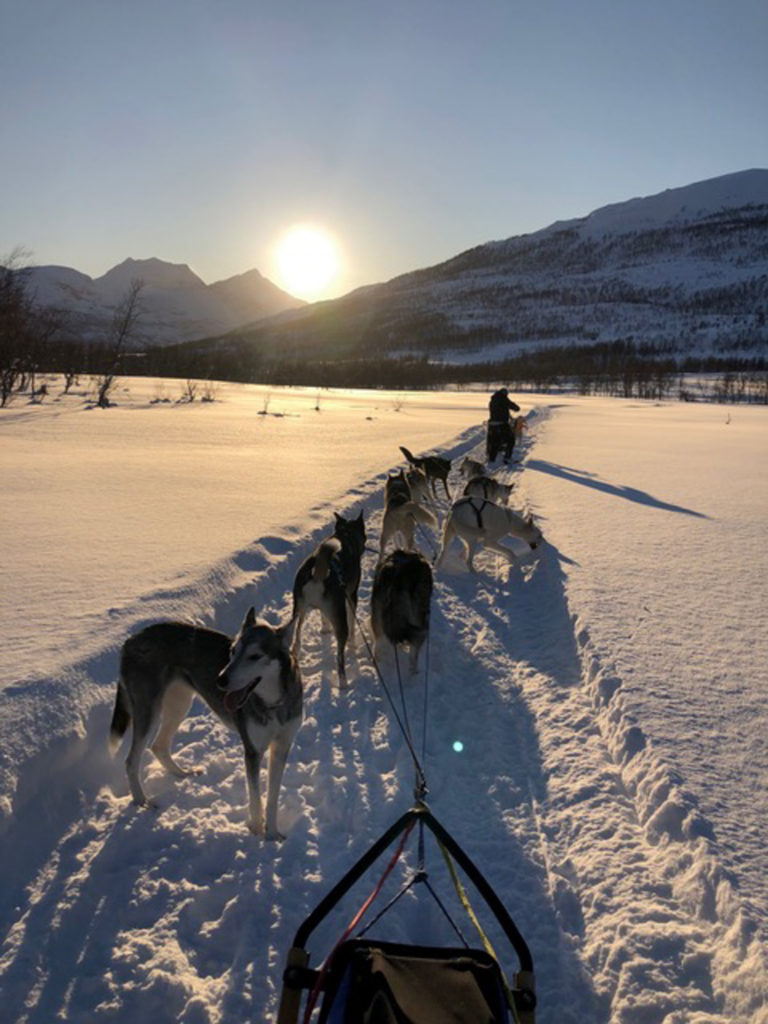Endlessly varied, largely undiscovered and with prime Northern Lights chances; the island of Senja is a winter and Northern Lights secret.
The large island of Senja is a winter holiday destination off the beaten track. Come her for the endless variation in landscape, from a rocky, dramatic coastland through forests to friendly, wintery farmland. Despite being far north, people live and thrive her, you can meet them in fishing villages, small agricultural settlements and in small towns. Then add the chance to have fun in the snow in a mild winter climate. Finally; it all happens right under the Northern Lights oval.
The Atlantic coast is wild and stormy
The Atlantic-facing coast of Senja is a conflict zone. Raging storms from the Atlantic, sometimes even with given names, crash against some of the earth’s oldest rocks in an endless battle. The result is a wild, rugged, and weather-beaten landscape. Cliffs, rocky outcrops, narrow fjords and the 98 islands in the Bergsfjord; around every one of the countless turns there is a new vista.
Yet it is full of life
People live tight together in compact fishing villages, and after Christmas the coast teems with life, as the cod comes down from the high Arctic to spawn. Even before the sparse daylight, the boats leave places like Husøy, Senjahopen and Gryllefjord and head for the fishing grounds. In the mid-afternoon dusk, big cod is hauled into fish factories, and leaves Senja almost immediately for gourmet restaurants all over Europe. The local boys and girls make an extra income by cutting the tongues from the cod. This blatant child labour means wealthy Senja kids have the latest in computer games.
Kristoffer went Northern Lights hunting
The Norwegian Scenic Route winds its way along the coast
The narrow Norwegian Scenic Route goes in twists and turns under majestic peaks, by rocky islets and in serpentines over mountain passes. This lifeline for the locals is a source of ever-changing panoramas for travellers and is a must for travellers. Make the detour out to Husøy, a densely populated little island, and don’t miss the lovely beach at Bøvær. Gryllefjord is colourful among the steep cliffs, the little 1785 church of Torsken is a minutes’ drive away.
Winter wonderland is hiding behind the mountains
There is a different Senja behind those rugged coastal peaks. The landscape flattens out, frozen rivers and lakes are surrounded by light boreal forests of birch, rowan and aspen, frost crystals shining in the low winter sun. Little country roads lead to small settlements, some of them only weekend homes these days. Come here for dogsledding and snowshoeing in low winter sun, and if it snows heavily on the ocean side, the clouds often open on this side. And you have good chances of spotting the light.
Friendly farmland lines the inner waterway
The Gisundet waterway separates Senja from the mainland. Along both shores, white expanses of snow-covered farmland are punctuated by red barns and colourful houses. The channel itself is full of ship’s traffic, as this is the main artery up and down the coast. At one of the narrowest points, colourful, quaint Gibostad looks acoss the sound to the stately church at Bjorelvnes, once the religious centre of large areas.
Follow the road along the south coast to calm waters and forests
The road along the south coast leads through dense, snow clad forests to a friendly coastline with calm waters. From everywhere, you see across the wide fjord to distant mountain islands. Once, the little island of Tranøy was the hub of activity in the area, attested by the 18th c. church and the red-painted vicarage. The valley of Ånderdalen is full of gnarled pine trees, and is easily explored on snow shoes or by dog sled. The Tranøybotn bay is perfect for kayaking, even in winter. The road ends at Skrolsvik, a picturesque harbour facing the open sea.
Finnsnes is the hub of activity
There’s nothing old and quaint about Finnsnes. Instead, this is where everything happens in the area, with a couple of friendly hotels, restaurants, shops and above all transportation. The legendary shipping line Hurtigruten calls at Finnsnes, and there is a boat to Tromsø several times a day. Bus lines radiate from here all around Senja Island and the nearby inland areas.
Dyrøy is the friendly forest island
The island of Dyrøy looks very different from the weater-beaten Senja coast. Rounded hills, clad with dense birch forest, and with views of fjords and hills in every direction. Under the steep hills, the farms are lined along the shore. A little bridge leads to the island from the main centre of Brøstadbotn, and it’s all peaceful and off the beaten track, an excellent chance of meeting Northern Norwegians at home.
Senja is right under the Northern Lights oval
Senja is found right under the Northern Lights belt, ring around the Magnetic North Pole where there are maximum chances of spotting the Northern Lights. No place on the planet thus has more Northern Lights than Senja. The lights typically shine about 100 km above Senja, sometimes up to 800 kilometres, so the lights are seen across vast areas of the north.
Go for a walk to see the lights
When there is that cold draft from the east biting in your cheeks, and the stars are shining, you can go wherever you like to see the lights. Dress warmly, have reflectives if you walk along a road and go for a long walk from 7pm onwards. It is of some importance to be on the move because it keeps you warm. Snowshoes are another option; they can be hired many places and allow you to go a bit away from it all.
Relax and see the Northern Lights
“Fyrlykta” – the Lighthouse – at Hamn i Senja is facing the ocean, with the dramatic coastline of Senja to your right and left. With a little glass of something, or just some herb tea, you can sit in all comfort and wait for the lights to come out. At the “badesjarken”, the fishing boat converted into a hot tub – things are even more relaxing.
Drive to beauty spots
If you have hired a car, you have even more flexibility. You can notably go to some of the well-known viewpoints along the Norwegian Scenic Route. These include the platform high about the Bergsfjord, the Tungenesset viewpoint towards the pointed Okshornan cliffs and the wide seaview from Ballesvika beach. If it snows or rains, you should, however, head inland. Sometimes it only takes a 20 minutes’ drive to see those stars emerge on the night sky.
Go on a fun tour under the Northern Lights
Another option that keeps you warm and entertained, is an organised tour. By being active, you’re always warm, you get to go deep into the dark winter night and if the lights fail to turn up, you have still had great fun. There is dog sledding at several locations, and you can go snowshoeing in lovely coastal or inland landscapes.
Take part in a Northern Lights hunt
Finally, you can leave the Northern Lights to the pros. Senja now has Northern Lights chasers available, taking you to the best locations for the northern lights. The best locations vary from one night to the other, with the weather as the principal question mark. Northern Lights guides increases your chance of spotting the light, both because they are mobile and can drive you to where the clear skies are, and because of their insight into Northern Lights activity and changing weather patterns.
Senja is surprisingly mild in winter
Despite being around 300 km/200 miles north of the Arctic Circle, Senja enjoys a mild winter climate. In fact, the snow cover along the outer coast can be iffy most of the winter, although the surrounding peaks are usually snow covered all through winter. The inland core of Senja, along with the farming area along the inner waterway, can usually guarantee snow from Christmas to Easter and beyond. Average temperatures range from -1 on the outer most coast to -5 in inland locations in January/February. By March, daytime temperatures are on the increase, but the night remains cold.
The winter moves from darkness to light
For six-seven weeks in Winter, the sun is absent. This doesn’t however, mean that it’s dark all the time. For several hours, there is a low light with lovely colours, and at mid-day the southern skies are ablaze with sunset colours. The show is finished off with a lovely, deep blue light in the early afternoon. Already in mid-January, the sun is visible again. By February, the days are longer and sunnier, and in March long sunny days invite to sightseeing and snow fun. In the very last days of March, the daylight hours start eating into the best Northern Lights hours in the evening. Then your Northern Lights chances move from excellent around spring equinox to iffy in the first days of April. By late April it is simply too late, and daylight has taken over.
Eat that big cod
From January on, the Norwegian Artic cod comes to Senja for very amorous reasons. However, it risks being caught in the act by the fishermen. This means it’s time for mølja, a rustic dish of cod, liver, and roe, served with potatoes and carrots. Also look out for pan-fried cod’s tongues with grated carrots. The shallow waters along Senja’s southern coast deliver tasty, exclusive halibut, served fried or poached with a good sauce. Carnivores should look out for the local lamb.
Where should you eat?
When Senja-ites want to take grandma for dinner, they take her to Senjastua near Finnsnes. Here, local, traditional fare of fish and meat is the standard, and even grandma’s expert and critical palate approves. Fish specialities should also be sampled at Salteriet in Mefjordvær, often adding a bit of international spice to the gifts of the ocean. Storbrygga Spiseri in Hamn i Senja is the occasion for festive dinners on the dockside, facing the majestic mountains of Senja. Little Skagi in Skaland serves up light lunches and today’s hearty dinner, attracting locals and tourists alike. Senja by heart in Torsken prepares local fish with those international influences in a small village full of young people.
Your accommodation in Senja is always memorable
The big chains haven’t discovered Senja yet. This means that accommodation is locally owned, low key and in small units. A regular hotel room can be had in Finnsnes and Skaland, and resorts like at Hamn and Mefjordvær have restaurants, comfortable rooms and apartments and excursion programmes. There are hostels and simpler accommodation geared at skiing, kayaking and all the other activities that Senja offers throughout the year.
Holiday homes are for sociable people
If you’re travelling with friends and family, Senja’s accommodation is perfect for you. Huts, bungalows or rorbu (=fisherman’s shacks); it all means holiday homes with several bedrooms, a bathroom and kitchen facilities. The style varies from traditional Norwegian hytte to the latest colour scheme, so study Visit Senja’s overview with some care to find your perfect match. In the middle of the villages and settlements of Senja, you can also meet the locals by renting individual holiday houses.
History meets modernity
Kråkeslottet (Crow’s nest), with a view to the fabulous Bøvær beach reeks of tar and sea. The red, historic houses at the little island of Tranøya, surrounding the 18th c. church contrast strikingly to the white snow. At Skrolsvik you can stay in an egnebu (=house to prepare fishing lines for fishing) from 1870, amid old houses. At Skaland, you can sleep in the old post office. Old buildings in Torsken, like a wharf and a school, have been turned into fun places to stay with all mod cons in the middle of a vibrant, small village. The “Lighthouse”, on the other hand, is strikingly modern, but with a full seaview. Sleeping in a dome under the Northern Lights is an option here.
Combine Senja with Tromsø
The city of Tromsø lies an hour north of Senja. Tromsø has fancy restaurants, rowdy bars, museums, art galleries and attractions, and a wide array of Northern Lights tours, dog sledding, snowmobiling and countless other activities. However, peace, quiet and relaxation, the way you can have it in Senja, is harder to come by. The genius combo for that winter holiday week could then be a combination of lively Tromsø and peaceful, beautiful Senja. Stressed-out office workers should spend more time in Senja, and party animals should stay longer in Tromsø.
Getting to Senja and around
The nearest airport is Bardufoss (BDU), with direct flights to Oslo. From Bardufoss, the bus to Finnsnes takes an hour. Tromsø (TOS) further north is better connected with more international connections. The airport is some 10 minutes away from the city centre, and then it’s one hour by catamaran boat to Finnsnes. From Finnsnes, buses leave for every corner the island Senja as well as the adjacent mainland areas. Another catamaran of interest is the one leaving Tromsø for Lysnes on Senja’s north-eastern tip. From here, the bus leaves for the villages on Senja’s ocean side, notably Husøy, Mefjordvær and Gryllefjord. If you hire a car in Tromsø, drive to Brensholmen near Sommarøy Island and take the ferry to Botnhamn on Senja’s northwestern side. This is where the Norwegian Scenic Route starts, an excellent gateway to Senja.
Senja questions
Senja is an island off the coast of Northern Norway. It covers an area of some 1589 km2, and is connected with the mainland by the Gisund Bridge near the town centre of Finnsnes. This article also covers the mainland part of Senja municipality, as well as the nearby Dyrøy municipality.
The nearest airport is Bardufoss (BDU). From there, there is a short bus ride to Finnsnes. Tromsø (TOS) is further afield, but there are more international flights here. An hour by catamaran brings you from Tromsø to Finnsnes or to the little port of Lysnes in the north of the island.
There is a catmaran ship several times a day from Tromsø to Finnsnes. From Finnsnes local buses fan out across Senja. There is also a catamaran ship from Tromsø to Lysnes on Senja’s northern tip. From here there are buses going along Senja’s outer coast to some of the best known villages. If you drive, there is a car ferry from Brensholmen, 1 hour southwest of Tromsø, to Botnhamn in Northern Senja.
Yes. You can hire a car in both Finnsnes and Tromsø. There is little traffic on the roads, but they can be narrow and winding. Take your time. A rental car will invariably have studded tyres or winter tyres, but we only recommend hiring a car if you have some experience on snowy roads from before.
From Harstad, you travel by catamaran to Finnsnes. From here, there buses go to every corner of Senja Island, as well as to the adjacent mainland. From Harstad, there is also a local catamaran boat doing a loop around communities, also calling at Skrolsvik on the southwestern tip of Senja.
The catamaran Tromsø-Finnsnes-Harstad stops at Brøstadbotn or Kastneshamn on its way from Finnsnes to Harstad. Check with the updated timetable. There are also buses from Finnsnes to Brøstadbotn.
Senja is found right under the Northern Lights belt, and is thus one of the best places on earth to study this phenomenon.
